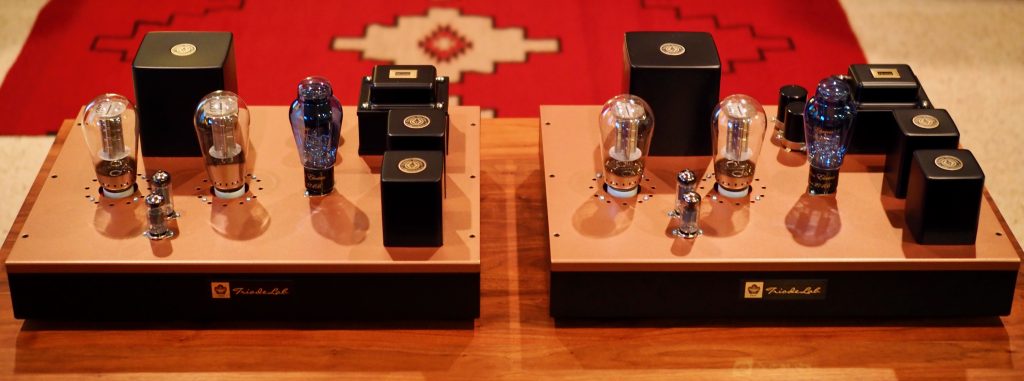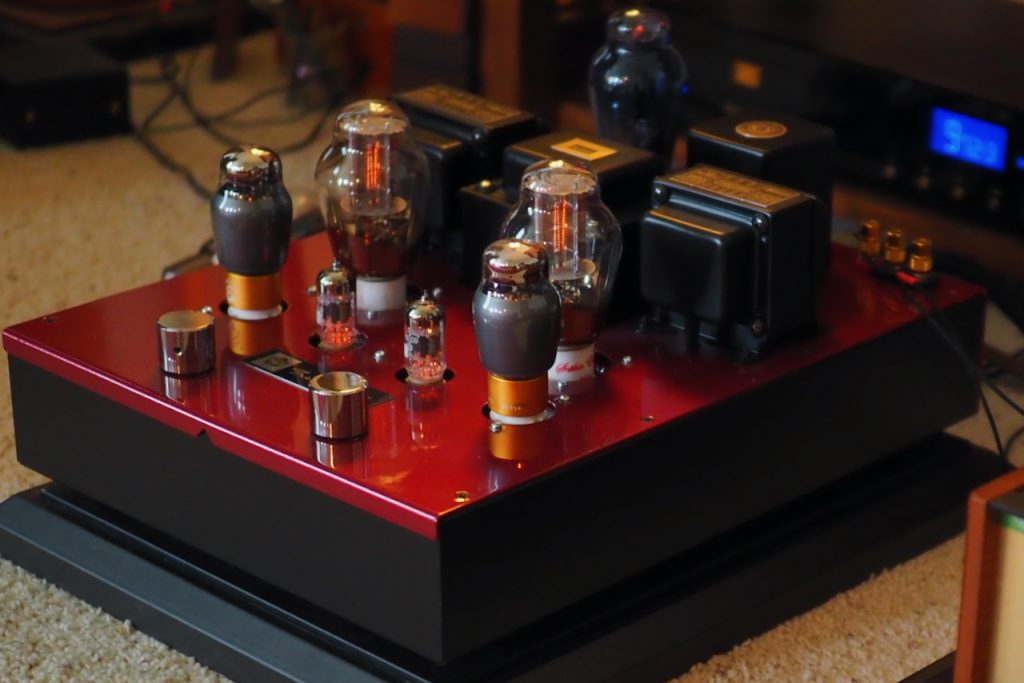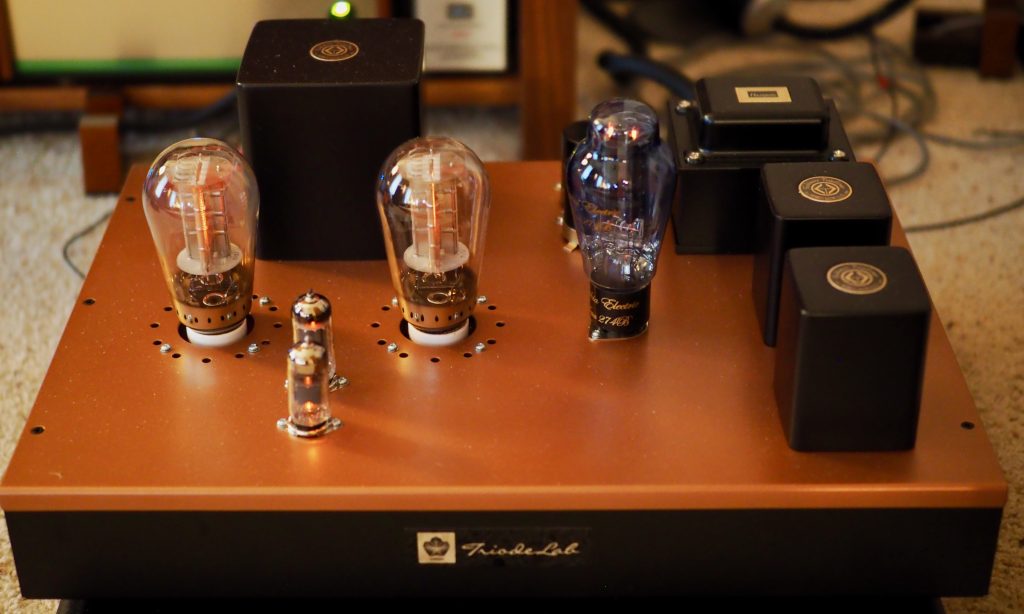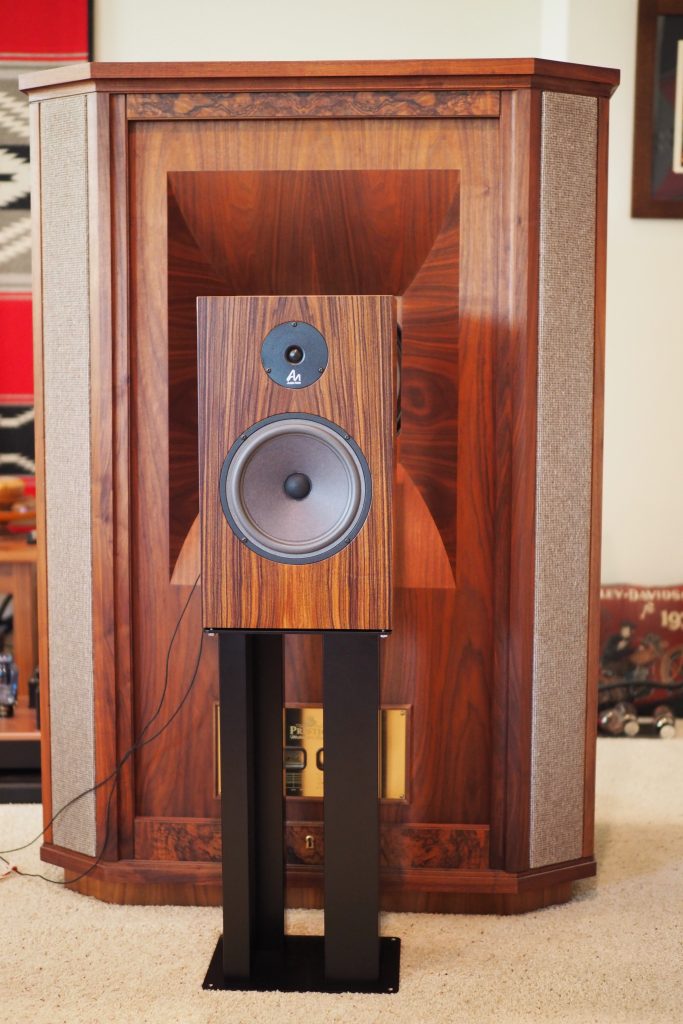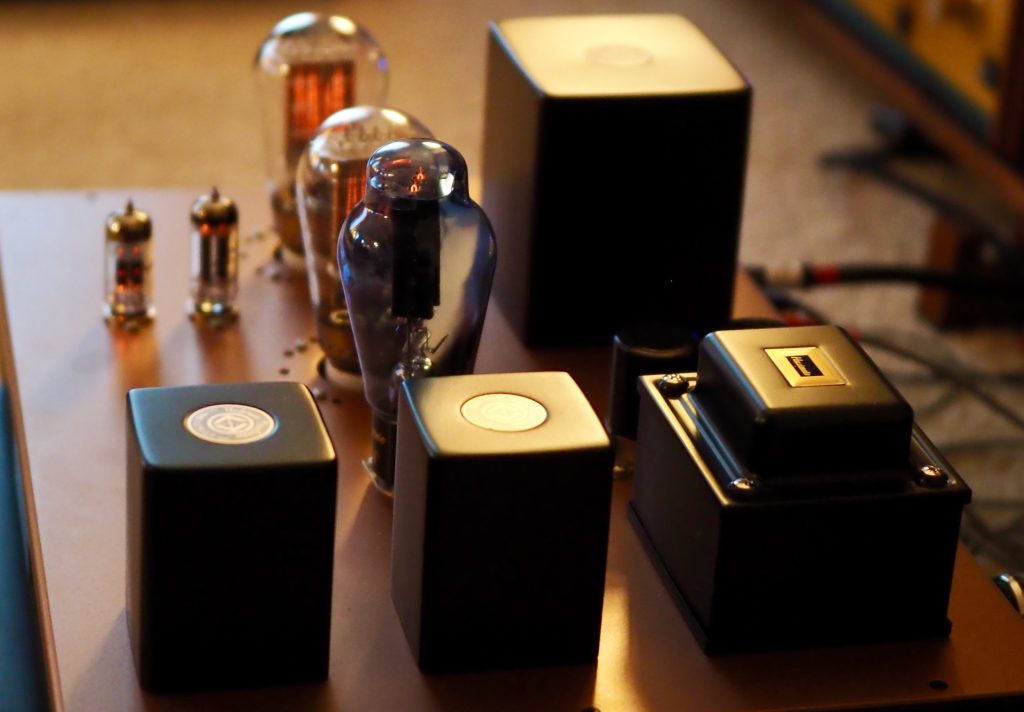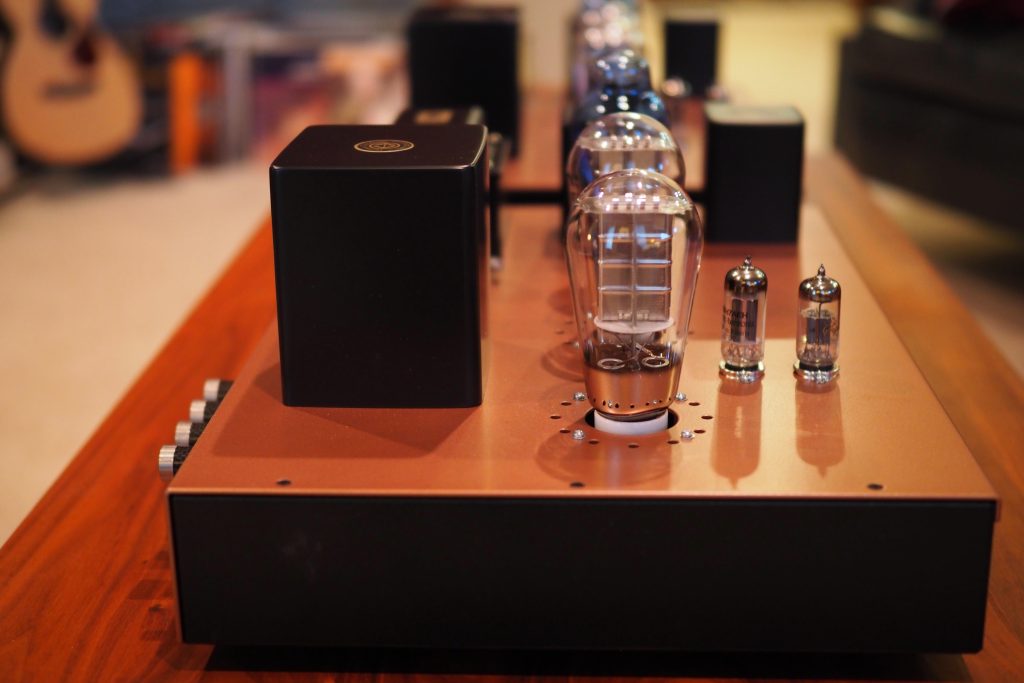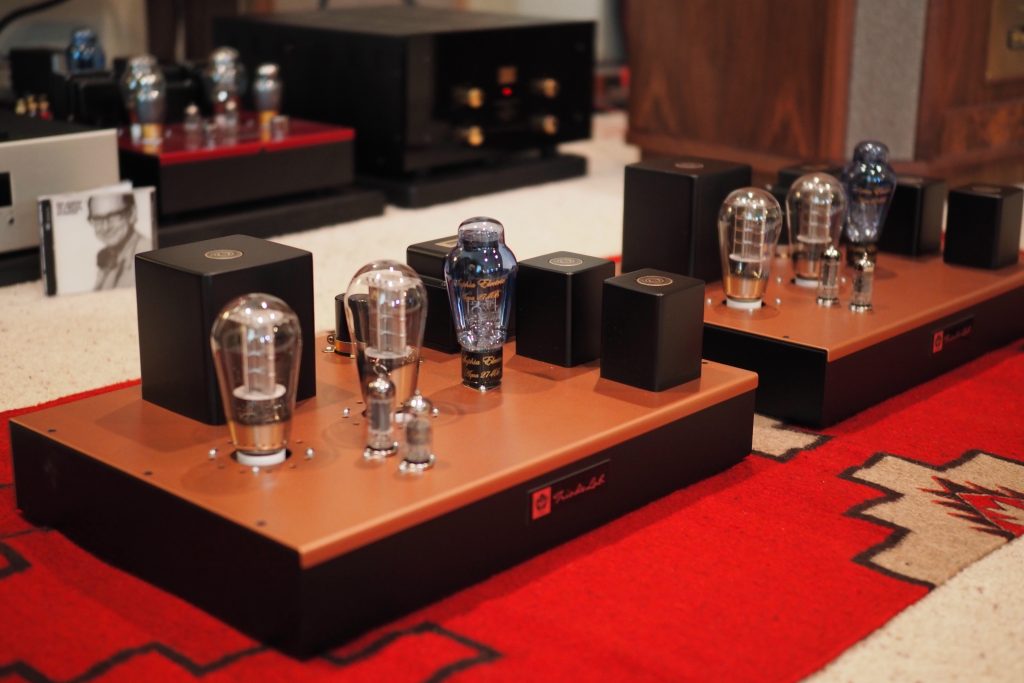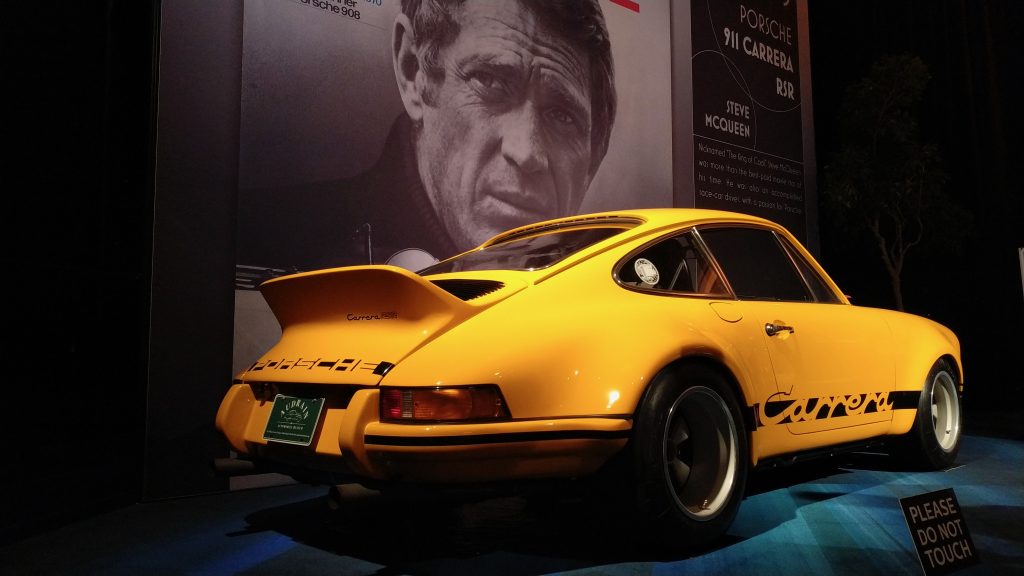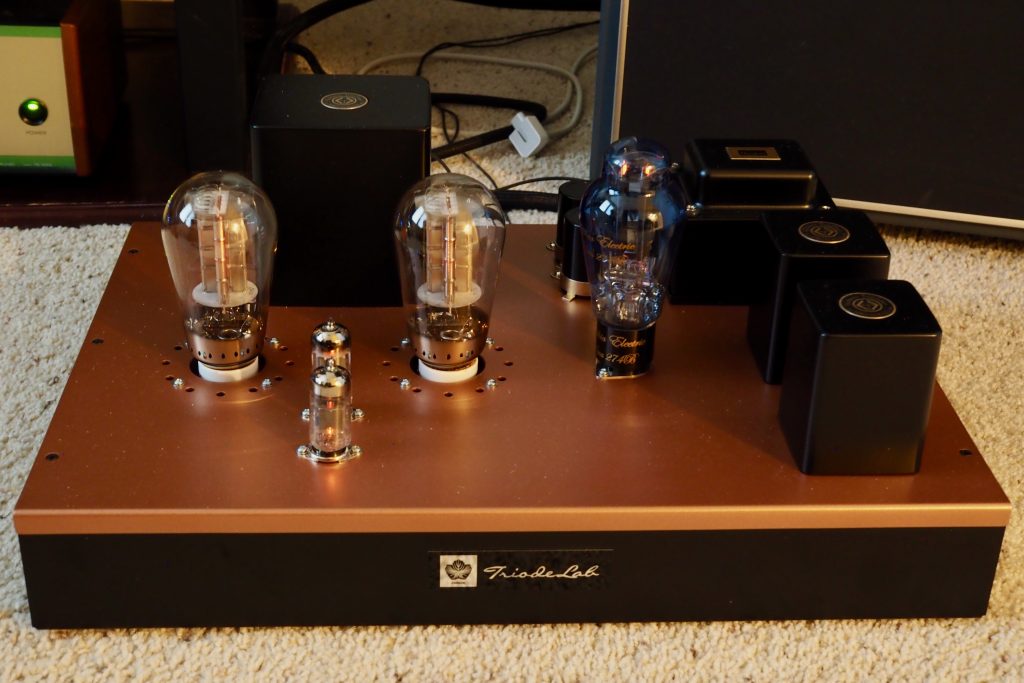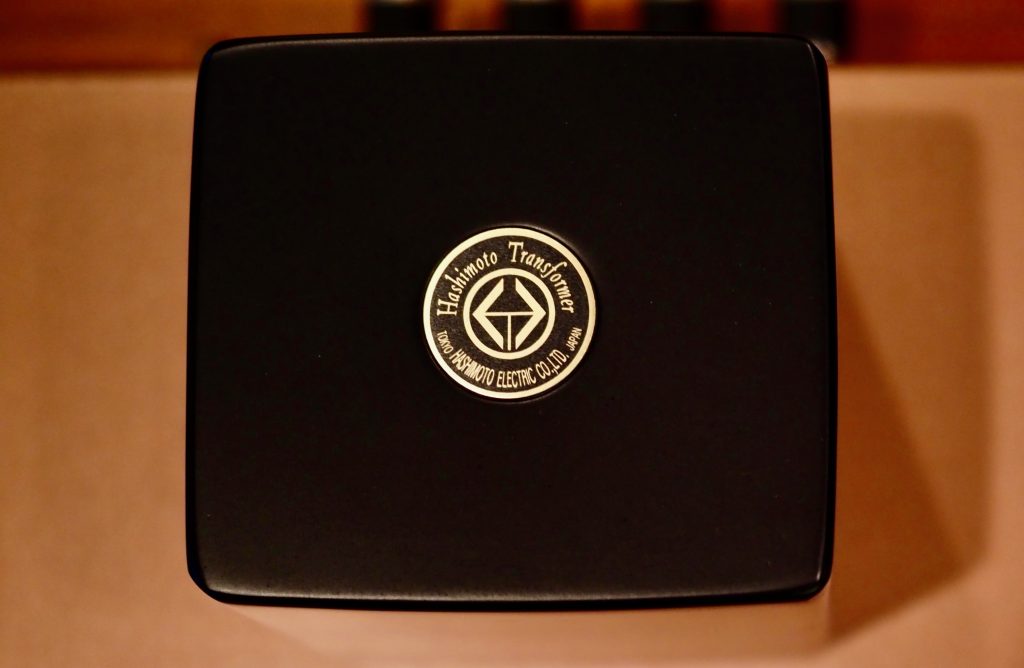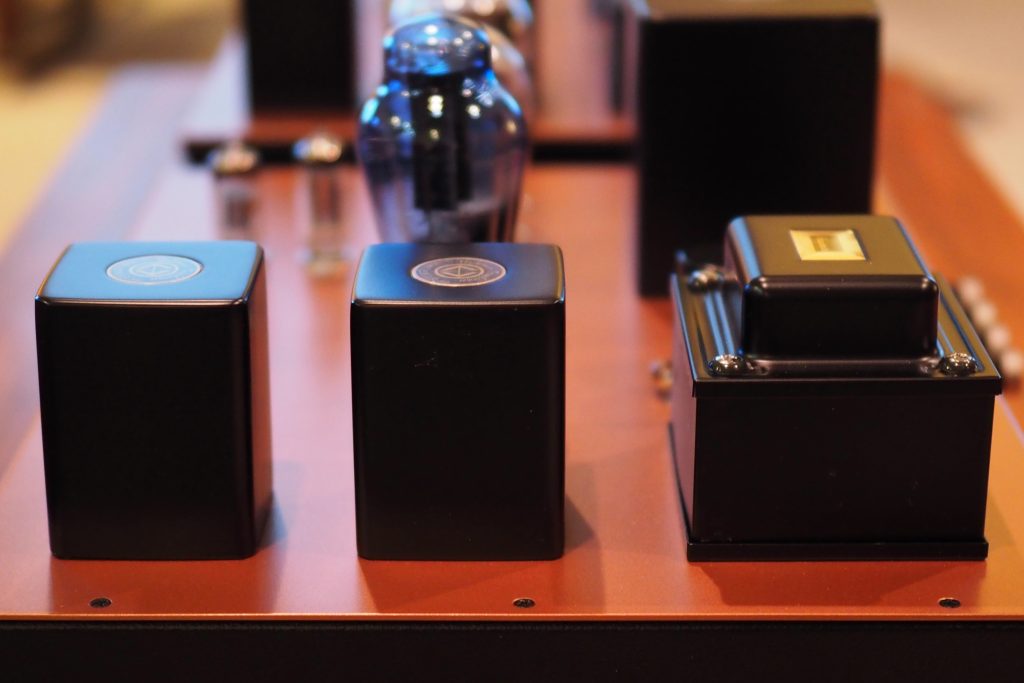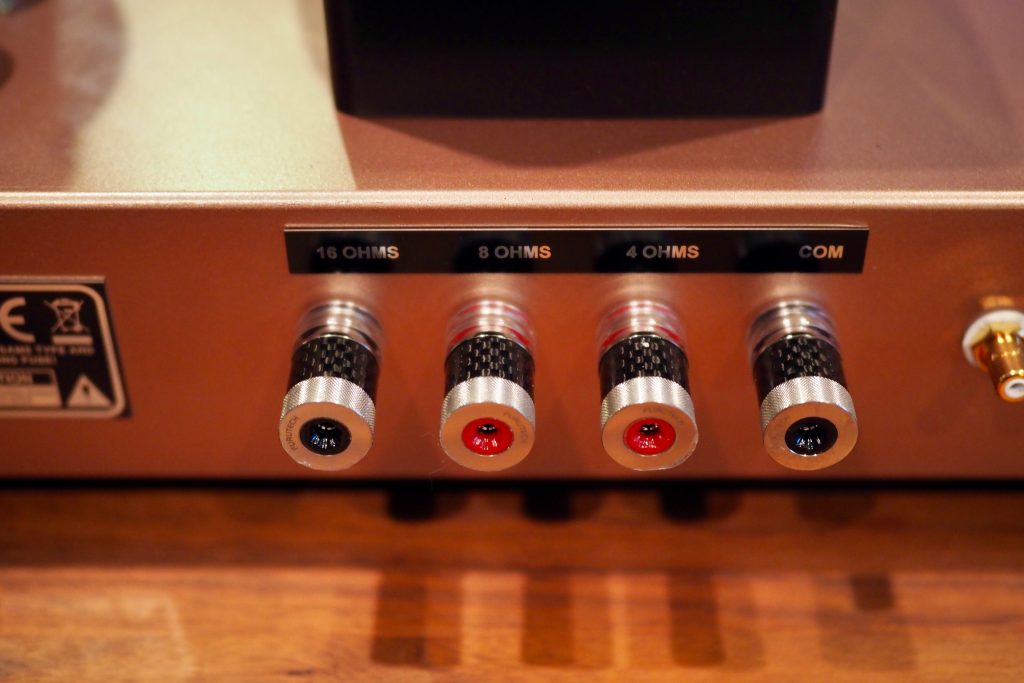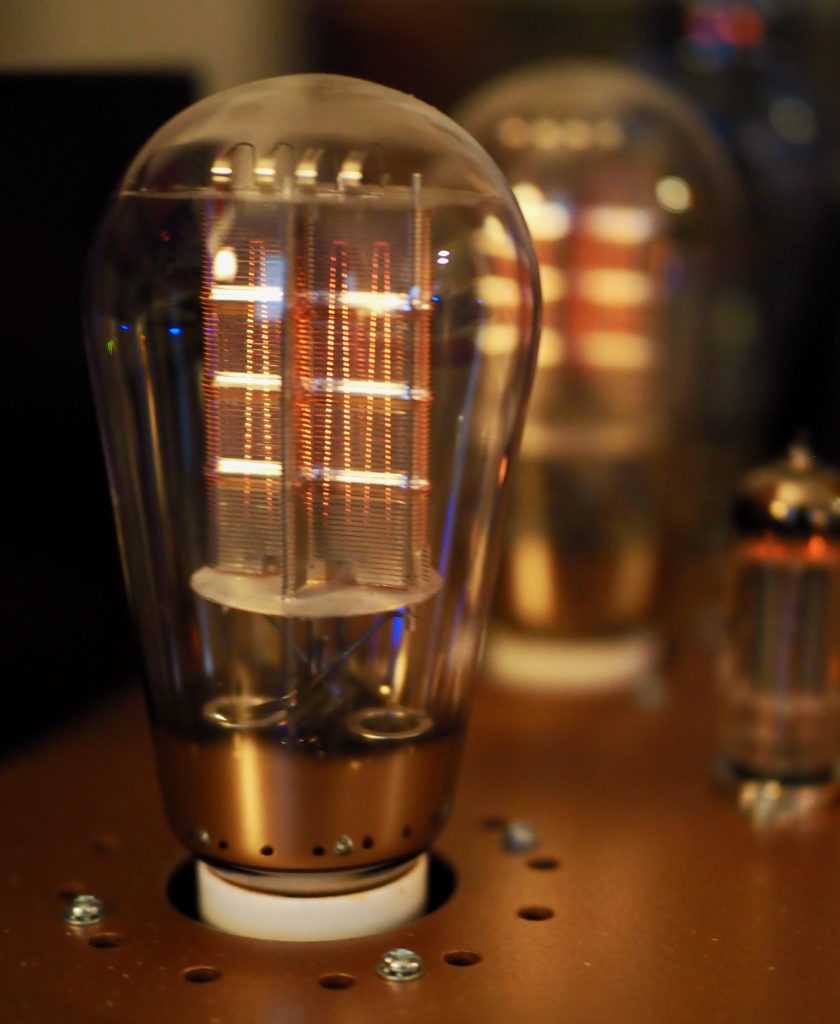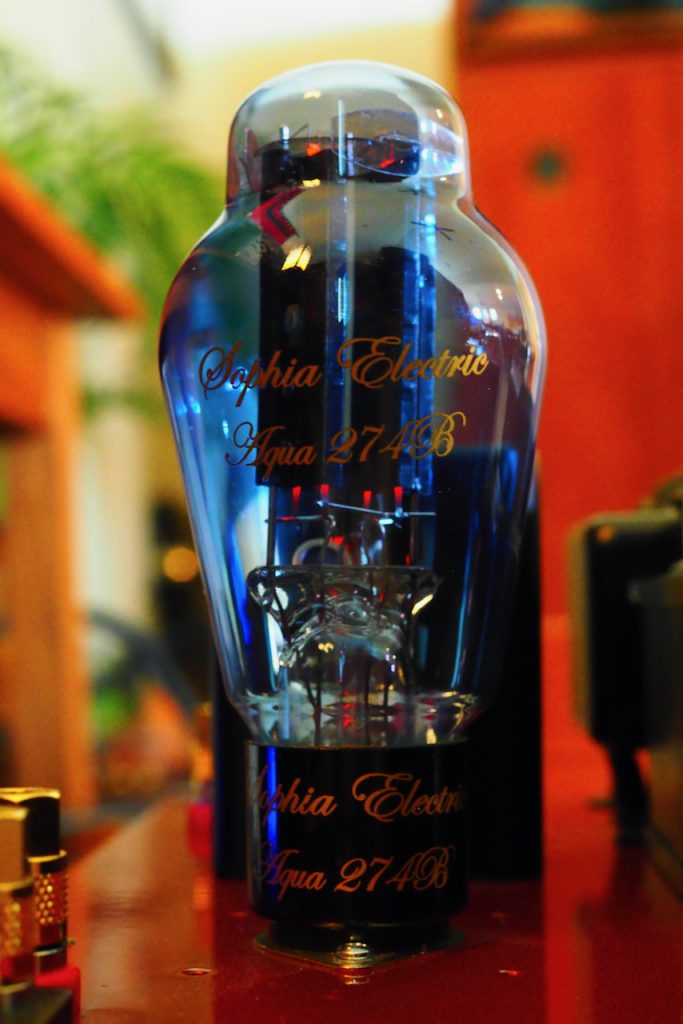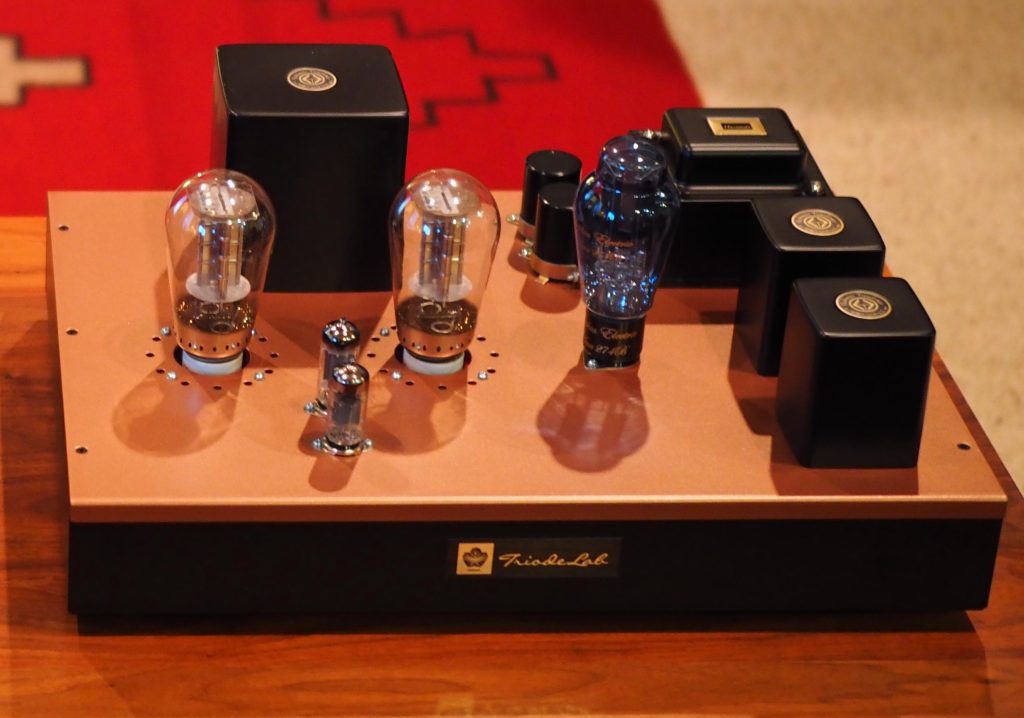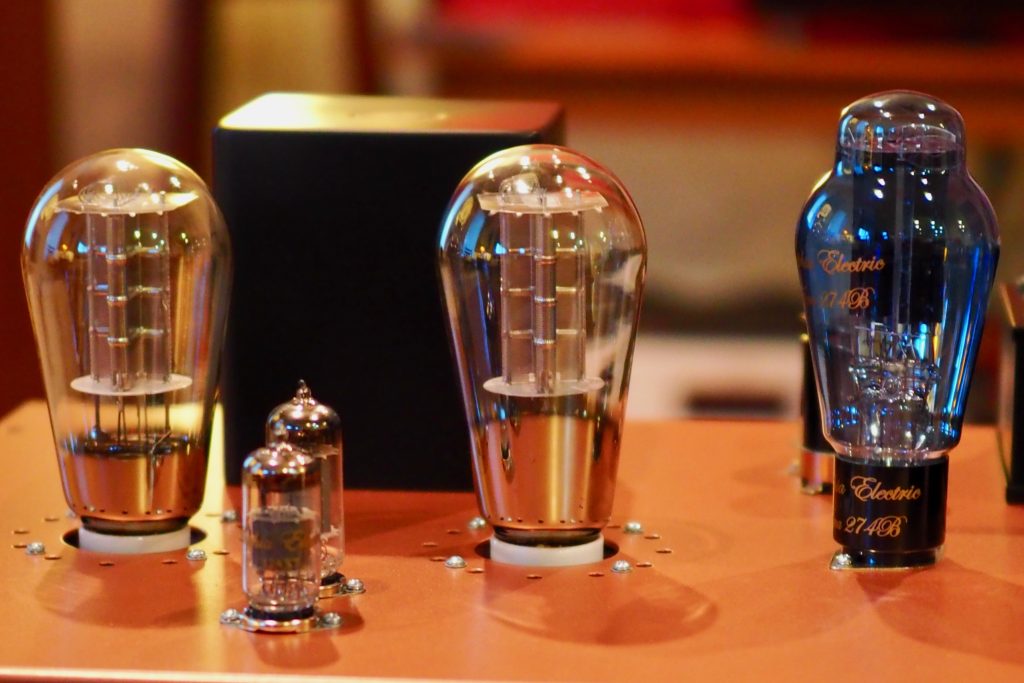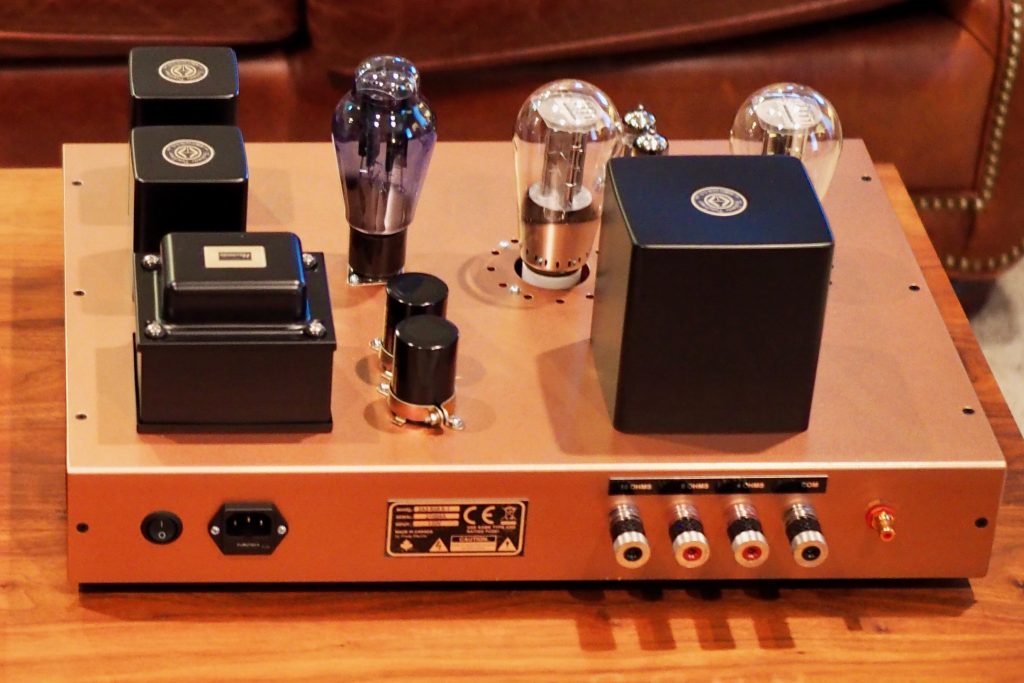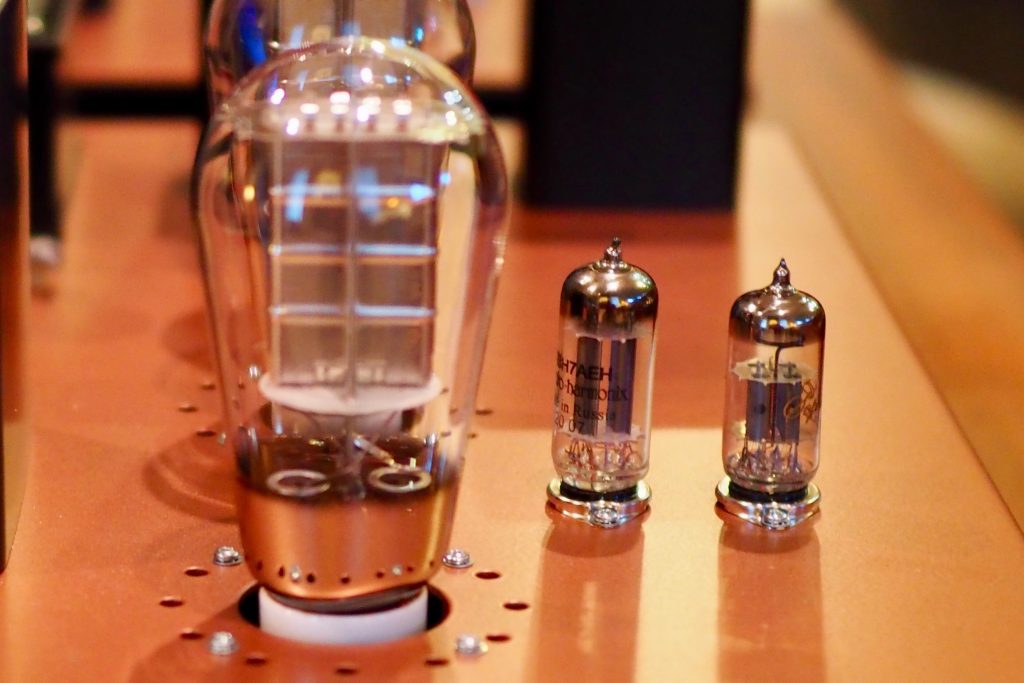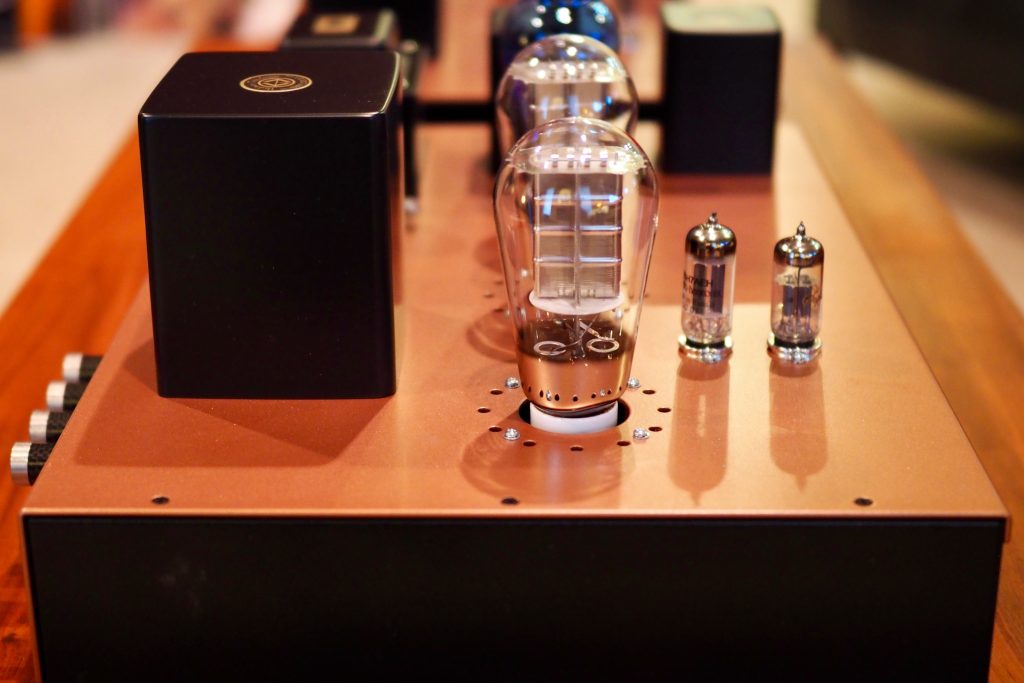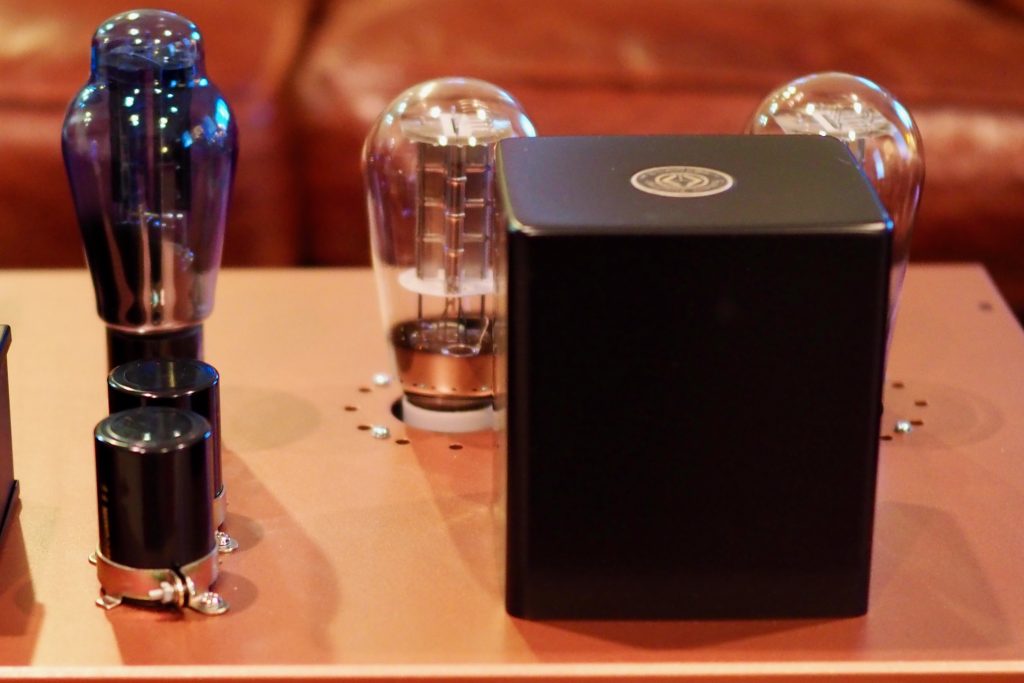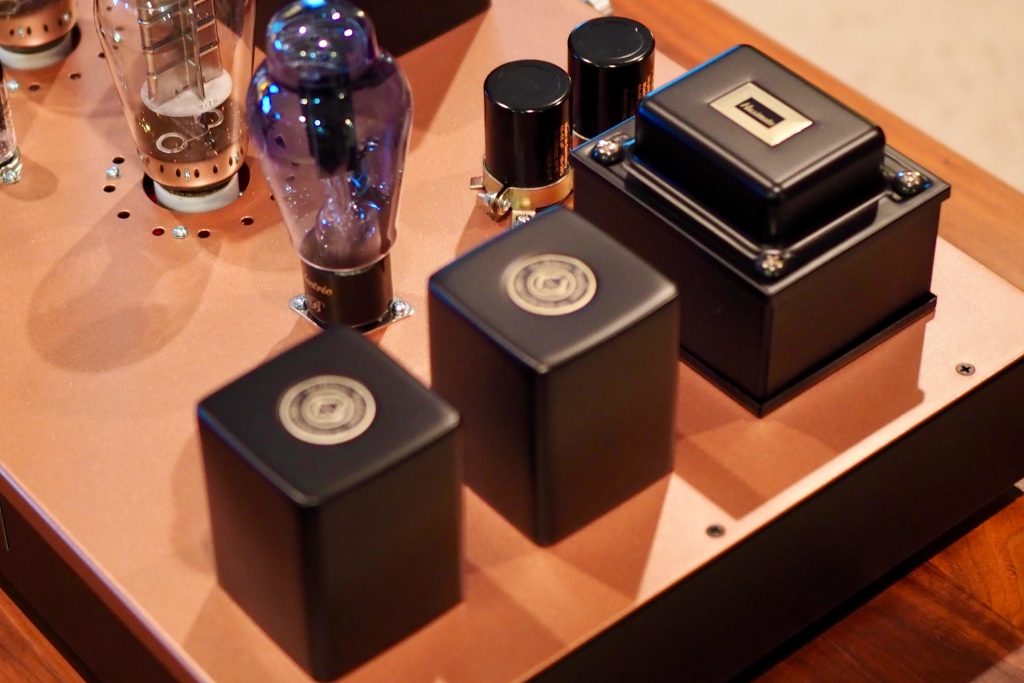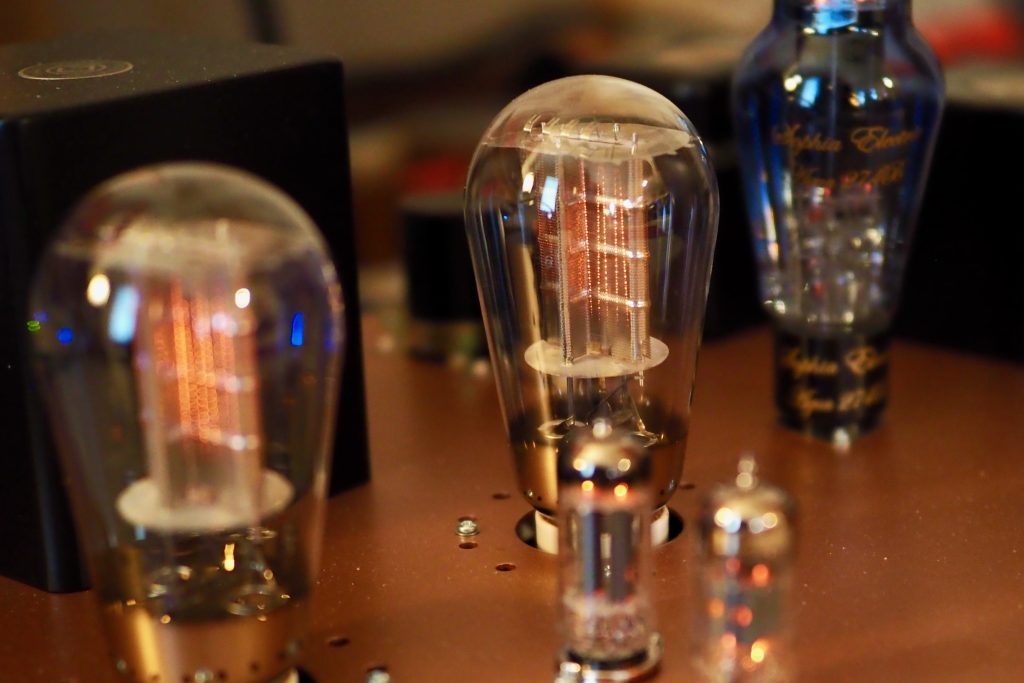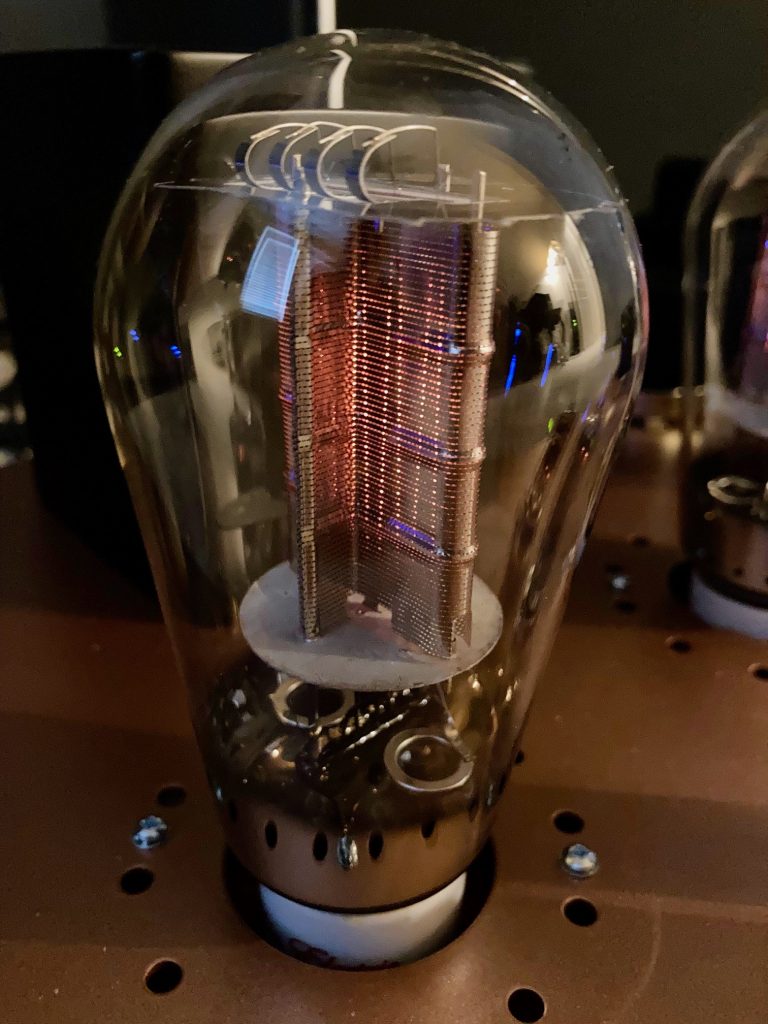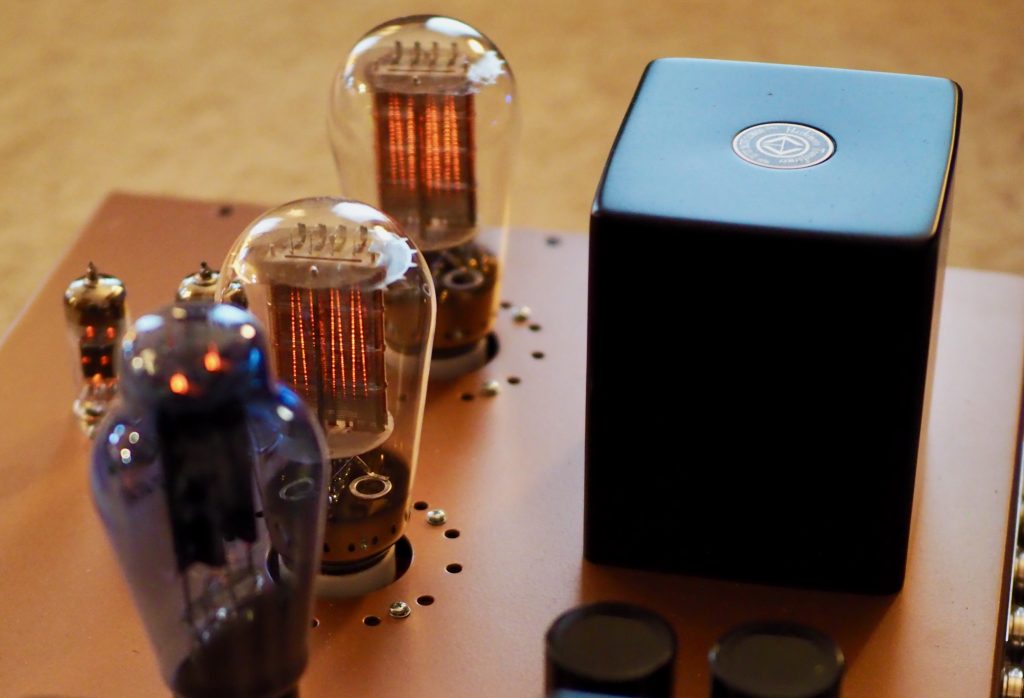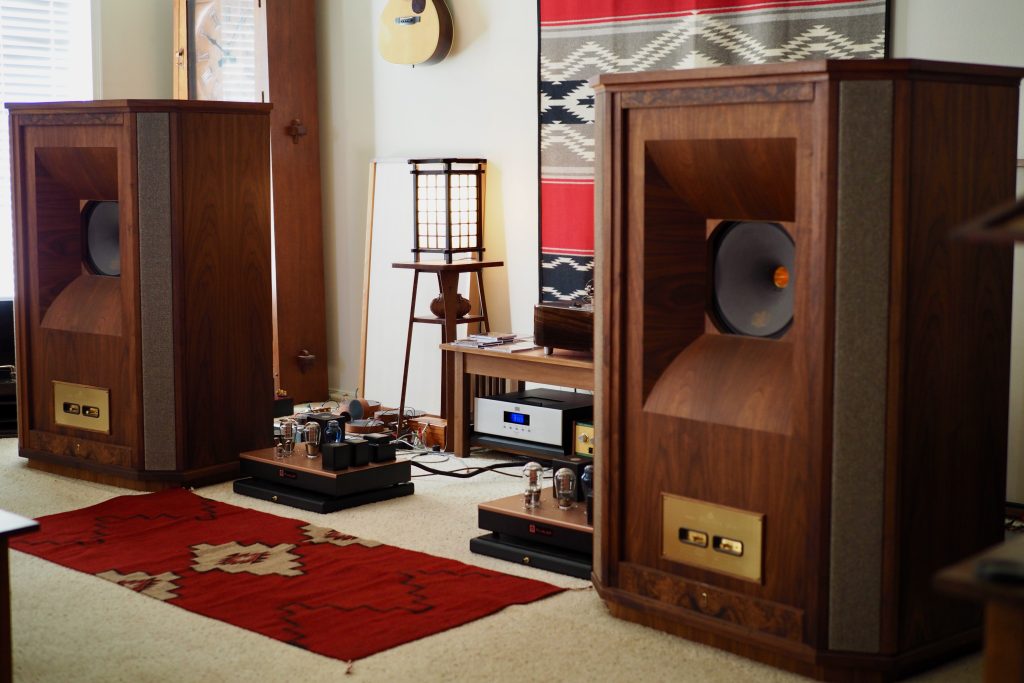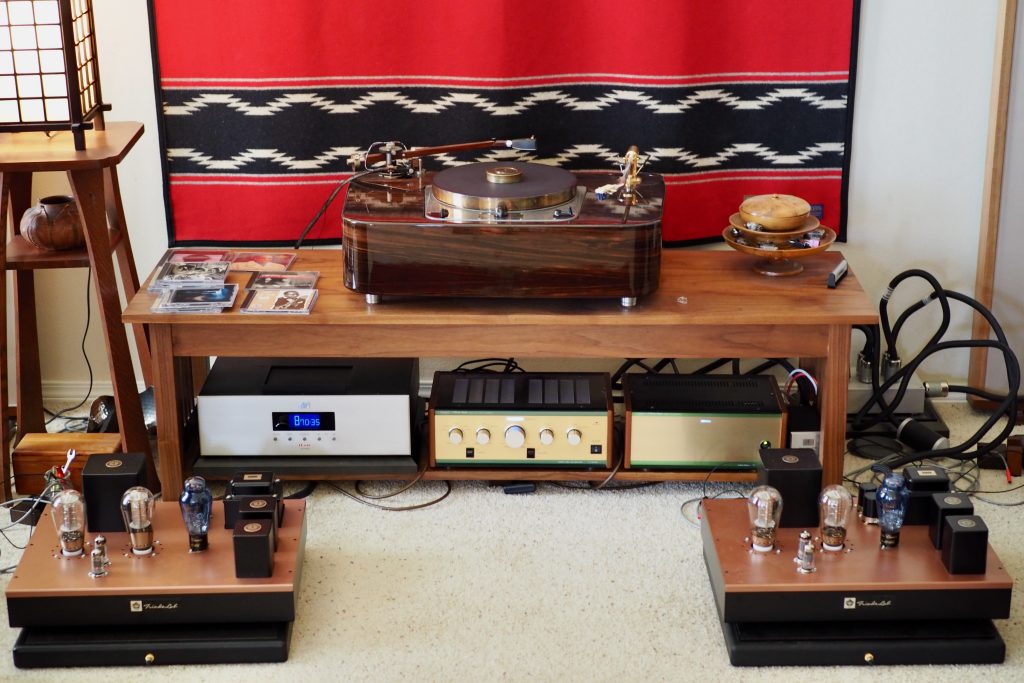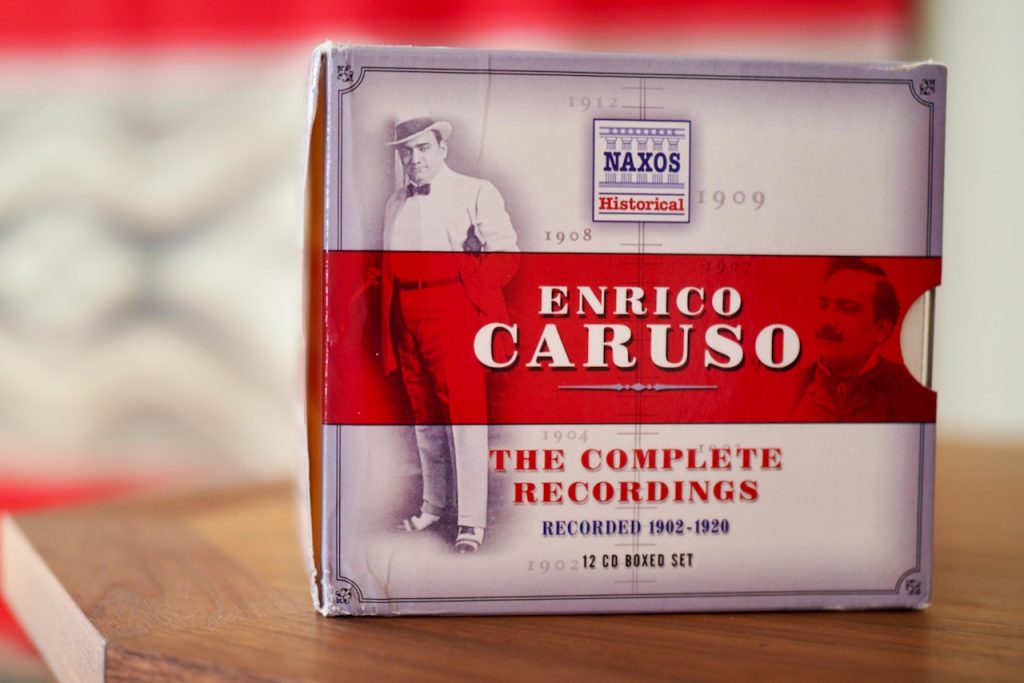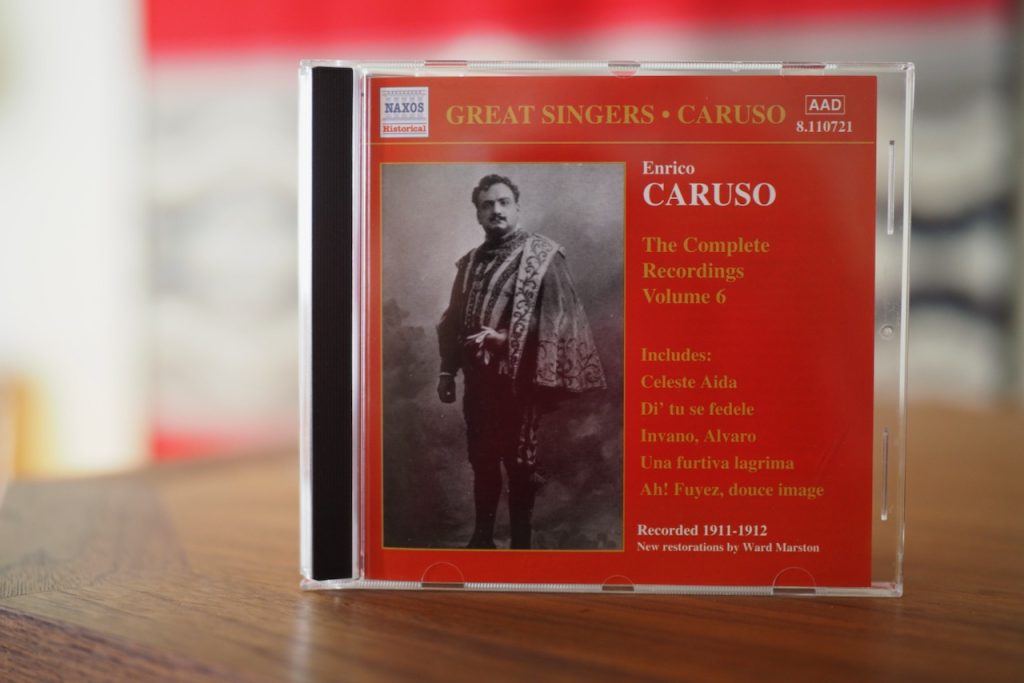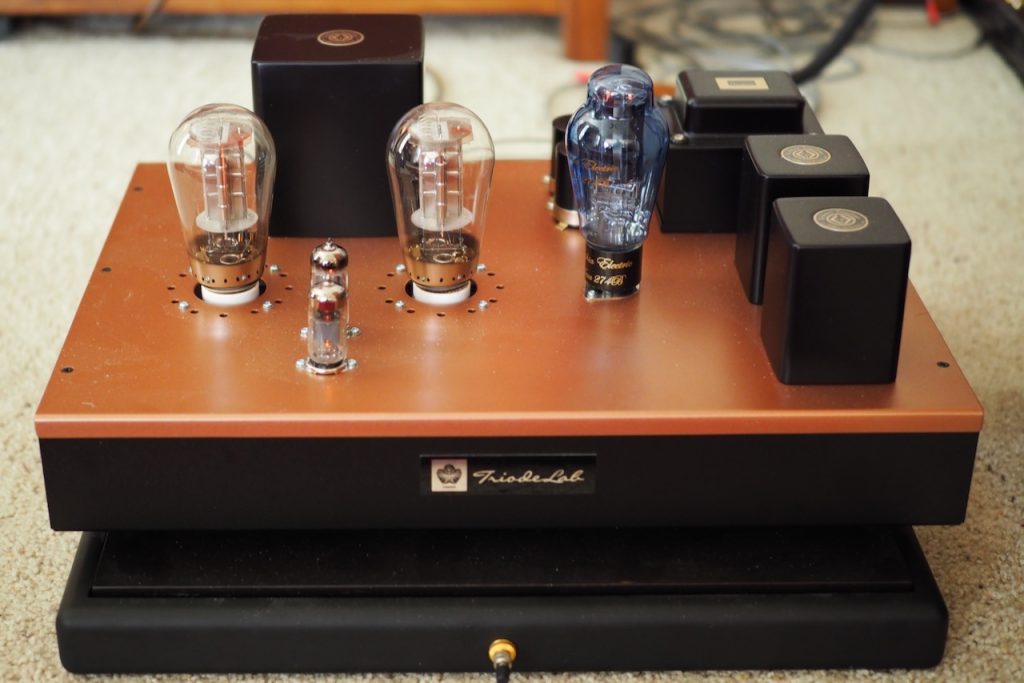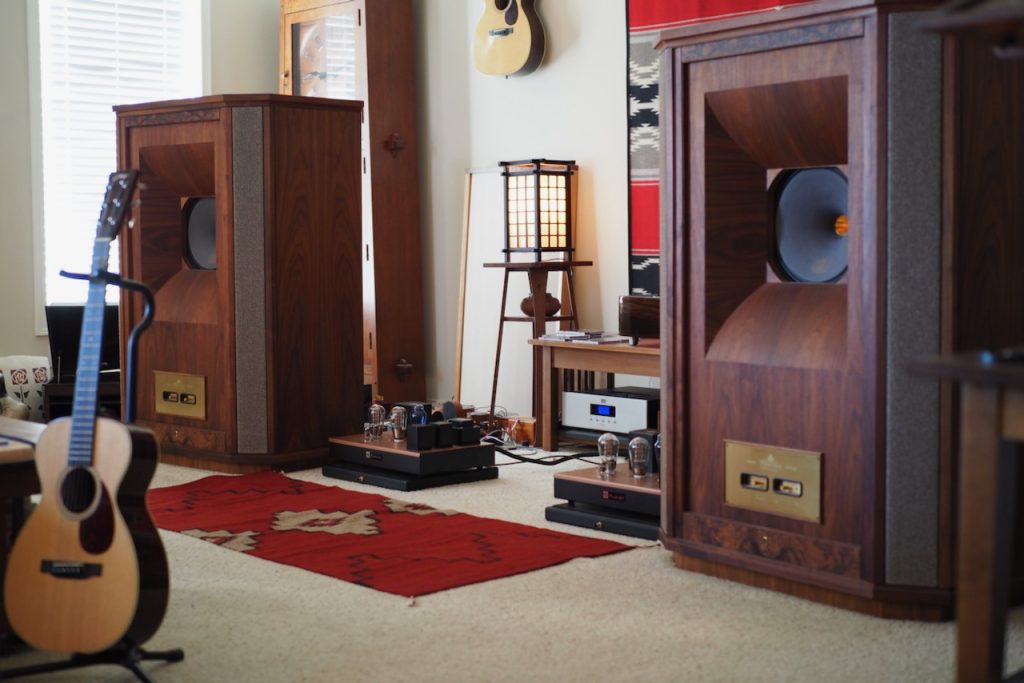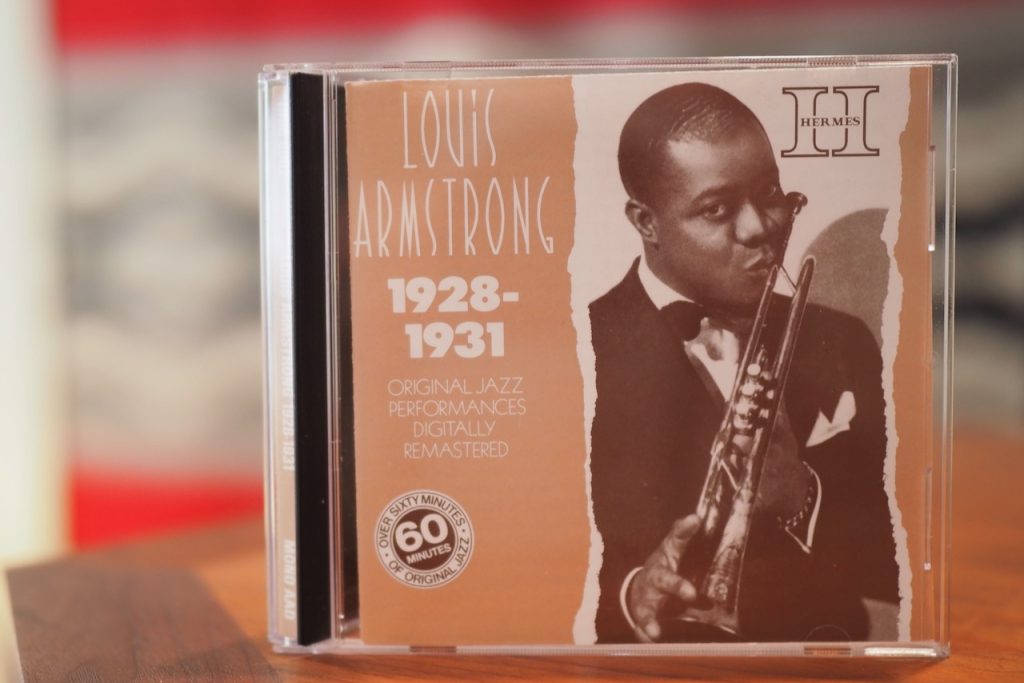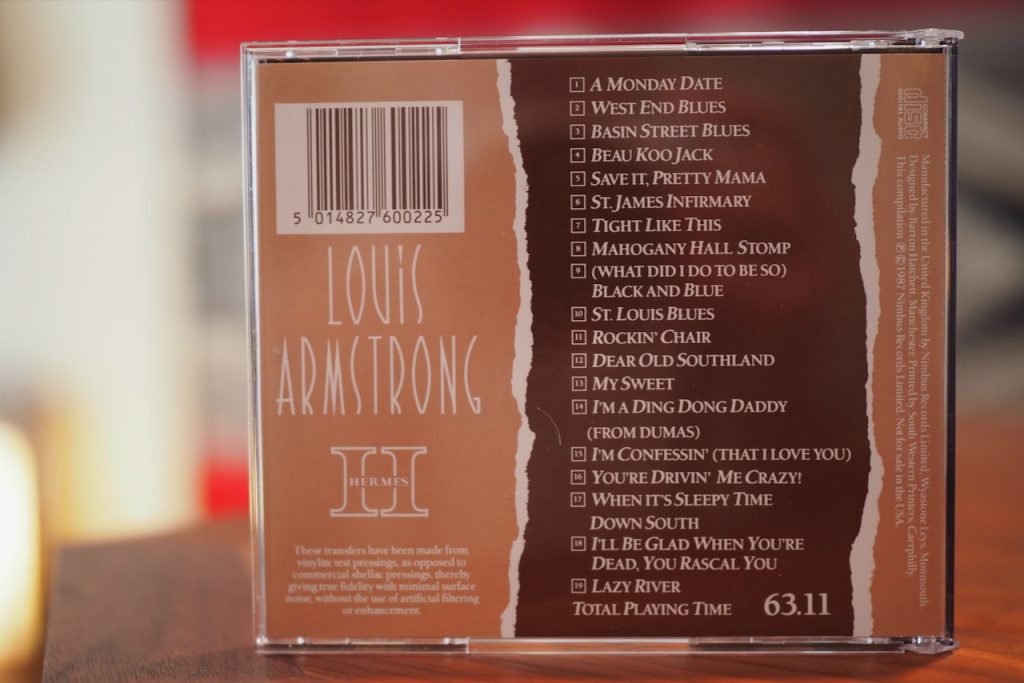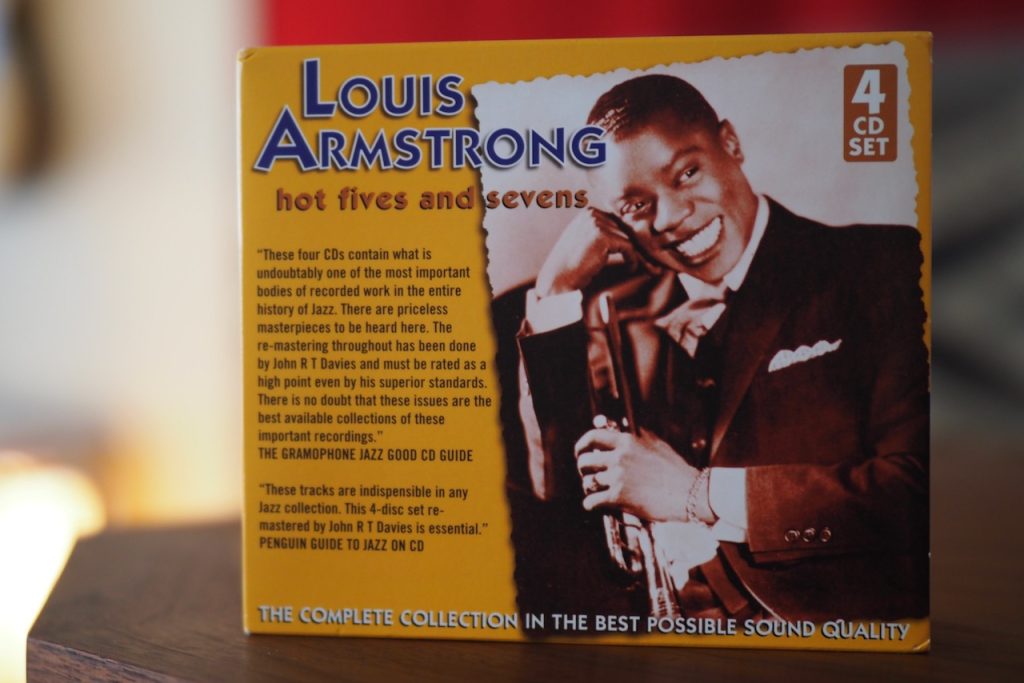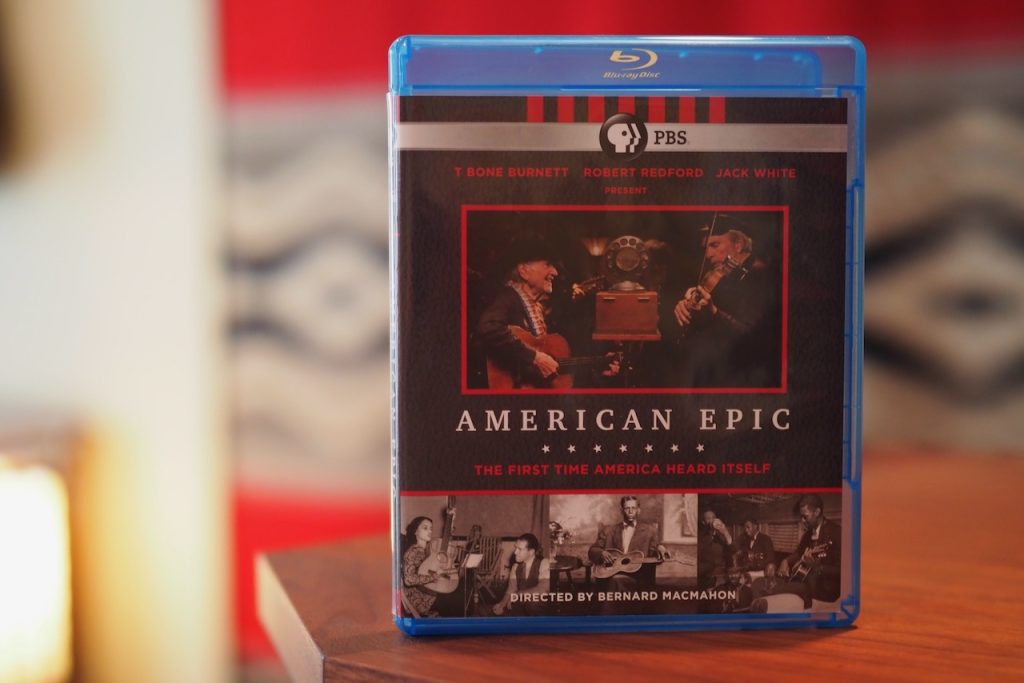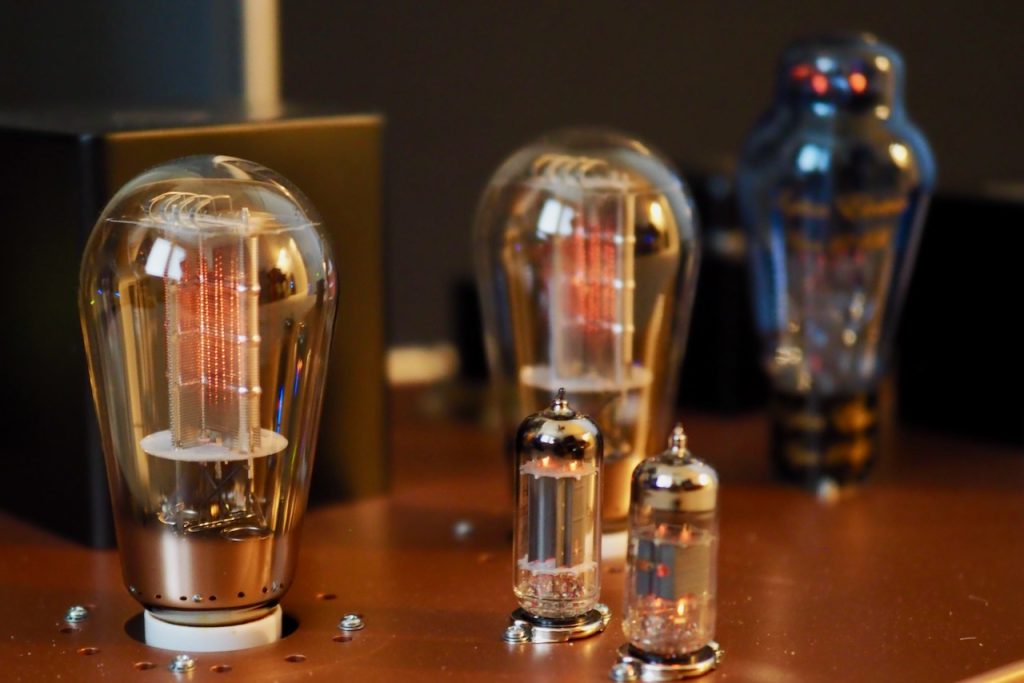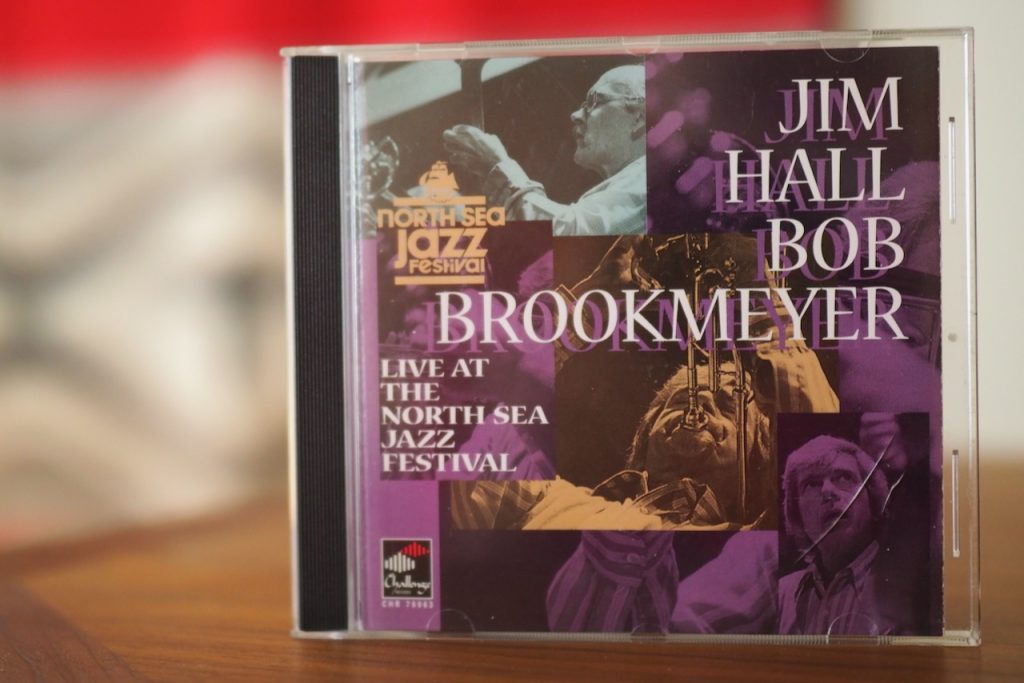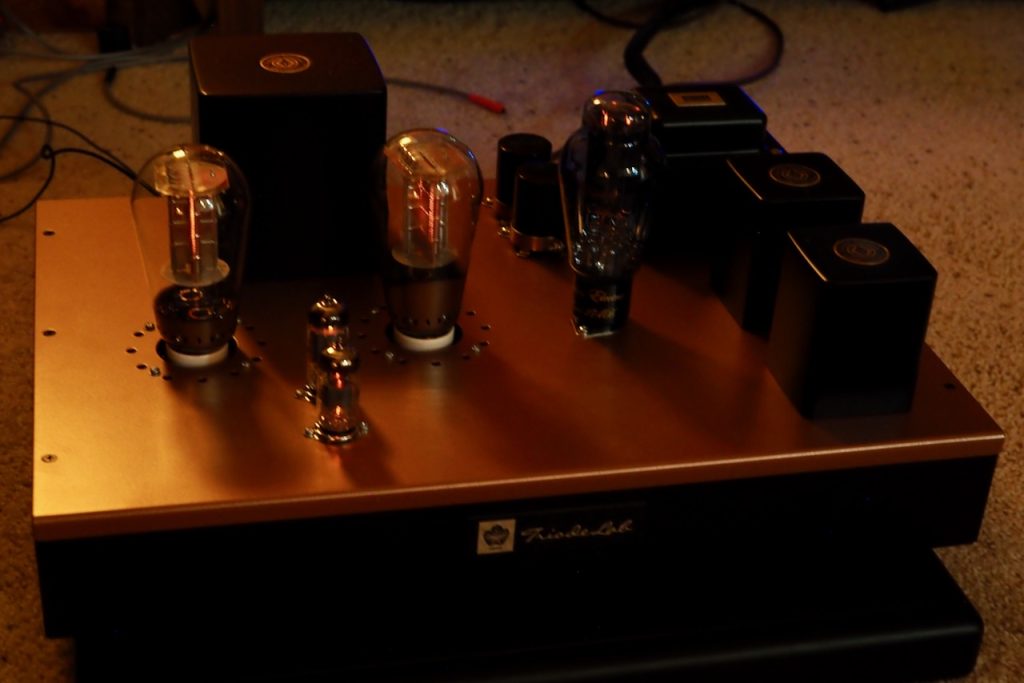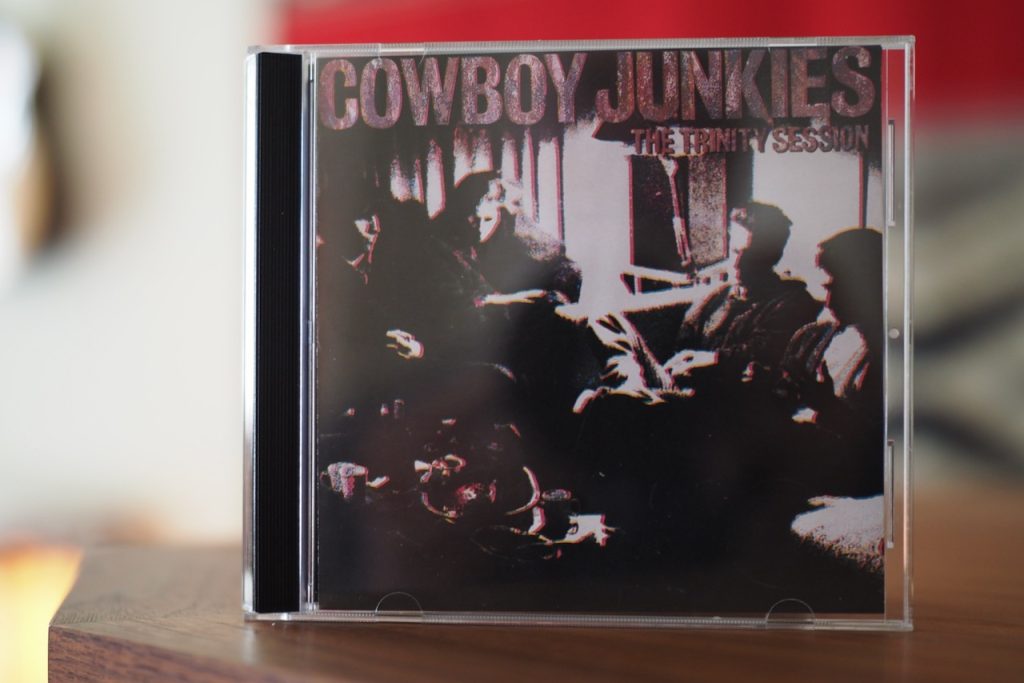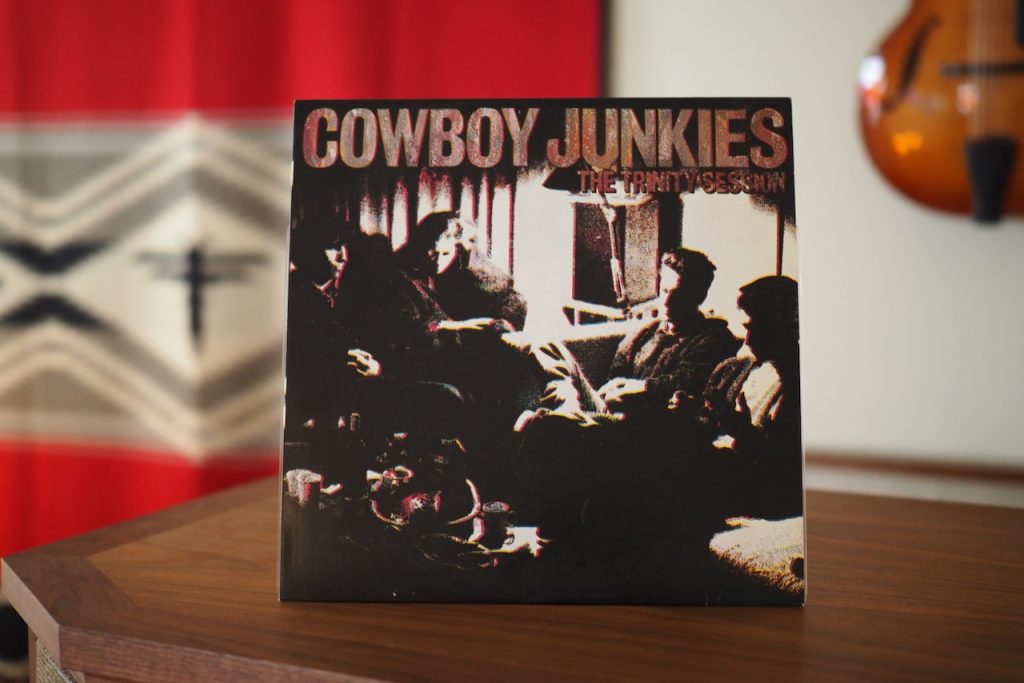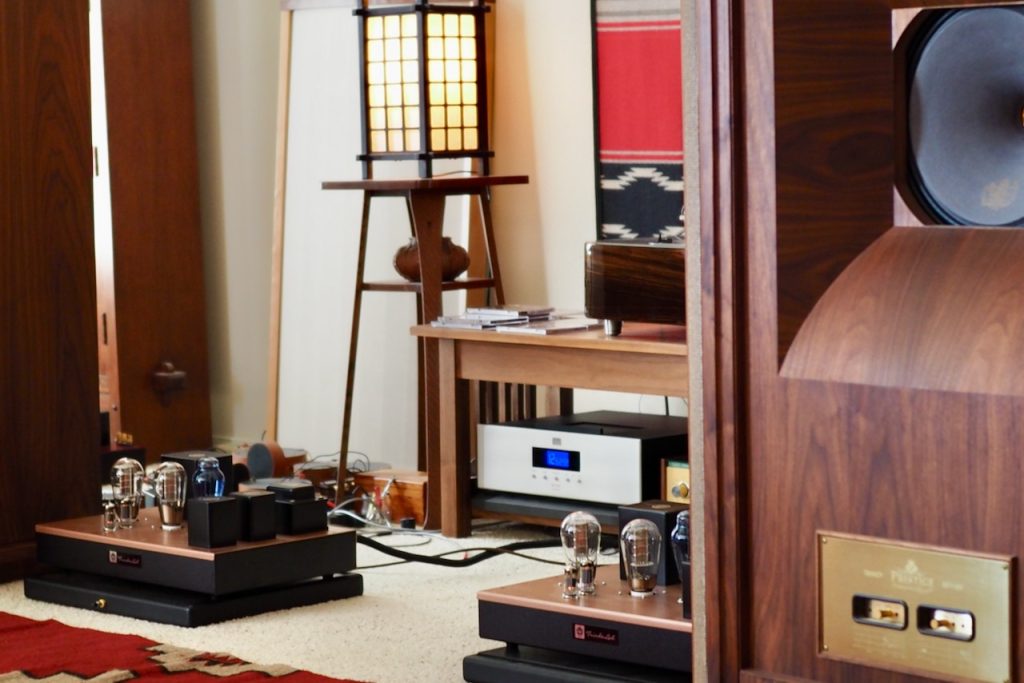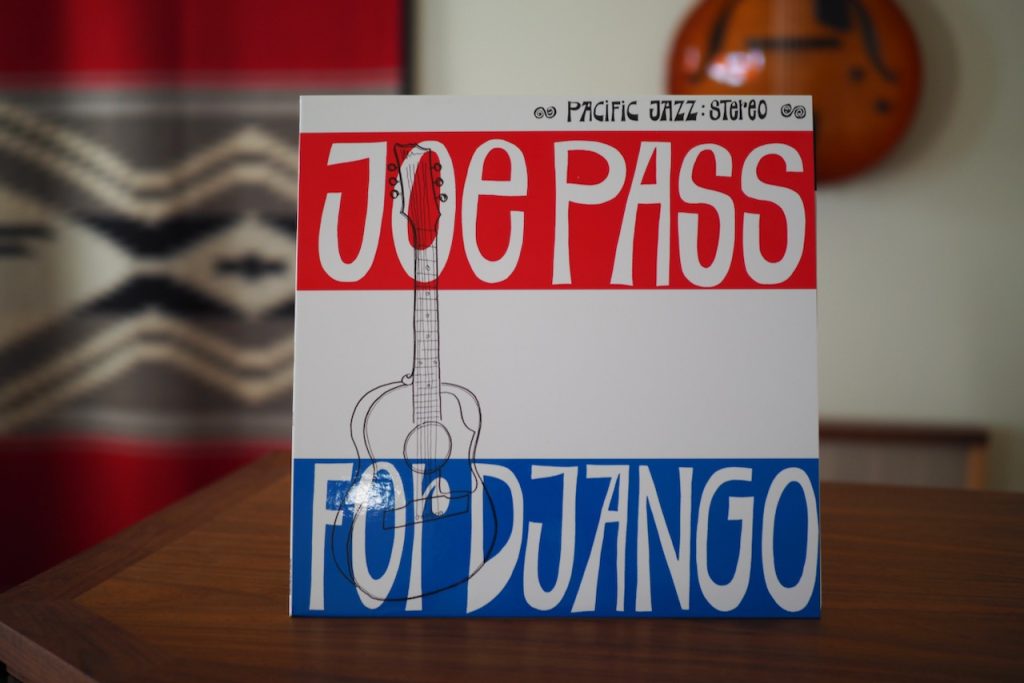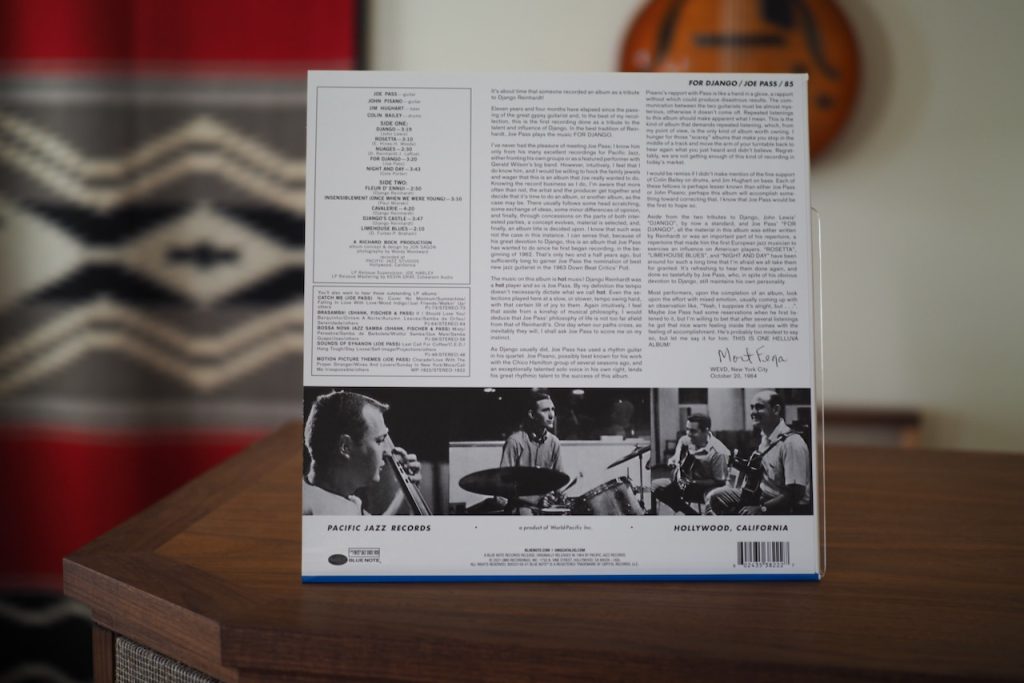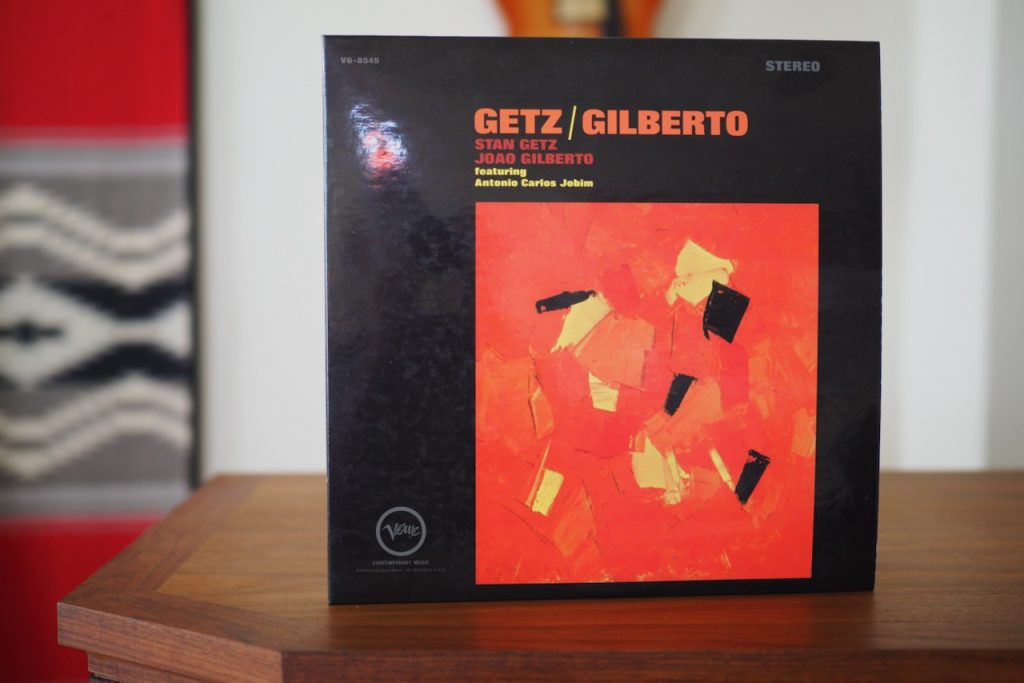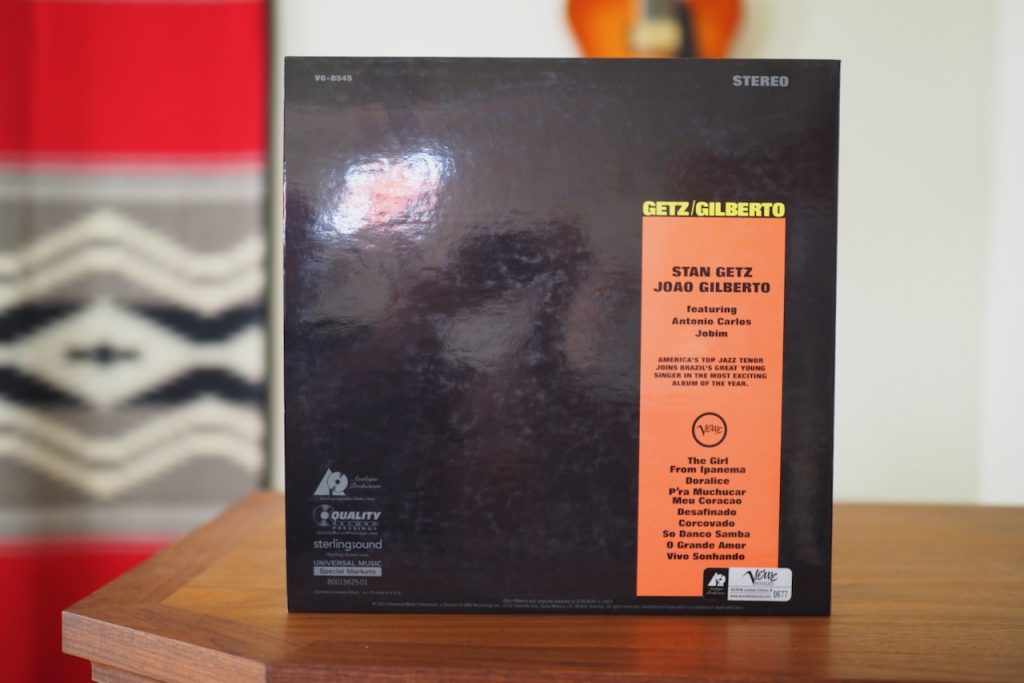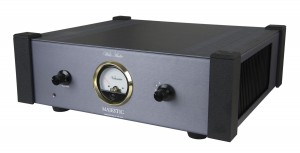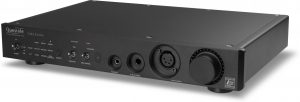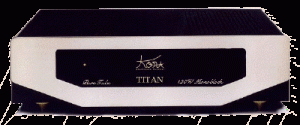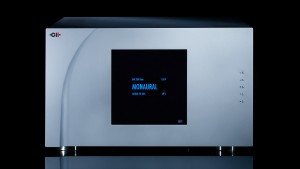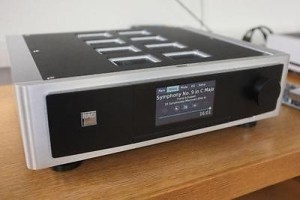A while back Triode Lab's Frank Ng asked me if I would like to listen to a pair of his very exclusive—only four pairs are scheduled to be made—cost-no-object, limited edition Triode Lab 2A3 parallel single-ended-triode (P-SET) RSR monaural amplifiers, that incorporated all of Frank's design insights for state-of-art high-performance SET amplifiers (HERE, scroll down the page).
Of course I said, "Yes!" After all, the Triode Lab 45 EVO SET integrated amplifier that I wrote about for you in Positive Feedback Issue 115 was the highest performing amplifier I have ever heard on my Tannoy Westminster Royal SE loudspeakers, so I was more than curious to check out the performance of Frank's cost-no-object, state-of-art, Triode Lab 2A3 P-SET RSR monaural amplifiers.
Frank thought I would enjoy experiencing the 2A3 P-SET RSR monos 'Ferrari level' of sound quality and musicality, along with the added benefits of the extra power they have over the Triode Lab 45 EVO SET integrated amplifier.
The 2 watt per channel Triode Lab 45 EVO SET integrated amplifier has routinely delivered live-like volume levels from my 99 dB sensitive Tannoy Westminster Royal Special Edition loudspeakers on most—but not all—of the albums I've listened to.
The promise of the 8 watt per channel Triode Lab P-SET 2A3 RSR monaural amplifiers was that I would be able to listen to all my music albums at live-like levels on my Westminsters, in state-of-art SET sound quality, and that has indeed been the case.
The Triode Lab 2A3 P-SET RSR monaural amplifiers actually have more power than I can comfortably use in typical listening sessions with my Westminsters, but it is nice to have the extra power in reserve for those special occasions when its needed.
Practically speaking, 8 watts is generally enough power to drive loudspeakers even at a middling level of sensitivity, starting at around 90dB and up, which opens up the range of loudspeakers that can be paired with the Triode Lab P-SET 2A3 RSR monos considerably compared to the 2 watt Triode Lab 45 EVO SET integrated amplifier.
For example, I briefly substituted a pair of 90dB sensitive Audio Note (UK) AN-K/SPe loudspeakers (more HERE) for my Tannoy Westminster Royal SE loudspeakers, and the Triode Lab 2A3 P-SET RSR monaural amplifiers easily drove the AN-K/SPes to live-like levels with the volume control on the preamp only about halfway up.
So the moral of this story is that the extra power of the Triode Lab 2A3 P-SET RSR monos over the 45 EVO SET integrated amp means that more audio enthusiasts across a broader range of loudspeaker sensitivities can access the 'next level performance' that Frank's custom amplifiers offer.
Frank Ng and Triode Lab
Frank Ng's Triode Lab is located in Toronto, Canada, and Frank custom builds each of his artisan amplifier designs to order to best match each customer's amplification needs.
The proprietary circuitry and build quality of Frank's amplifiers are indeed impressive, and artfully beautiful.
The highest quality component parts are used in each build, like Hashimoto transformers, Furutech connectors and silver solder, Jensen PIO capacitors (now owned by Duelund Coherent Audio), Mundorf capacitors, etc., and custom choices of automotive quality paint finishes.
Here's how Frank's custom tailoring process typically works: When a potential customer contacts Frank about the most appropriate amplifier for their loudspeakers and personal tastes, Frank will nudge them towards an amplifier model, optimum transformer choices for their loudspeakers, vacuum tube choices, and other options, that Frank's experience has proven will best meet a particular customer's needs and personal tastes.
There are also a number of custom upgrade options that customers can choose from if they so wish.
After finalizing the details, the custom build process commences, and a few months later the customer receives a hand-crafted artisan amplifier that is 'custom-tailored' to power their loudspeakers to the highest level of performance possible.
For my review of the Triode Lab 45 EVO SET integrated amplifier, Frank had me go through the same process as any customer would. Frank quizzed me about the loudspeakers I would be using with the 45 EVO SET—my 8 Ohm Tannoy Westminster Royal SEs and my 16 Ohm vintage Altecs—and about my personal tastes, then optimized the build based on that information.
The resulting Triode Lab 45 EVO SET integrated amplifier was a magnificent match to my loudspeakers collection, and elevated the performance of my Tannoy Westminster Royal SE loudspeakers to a level of performance that I had not realized they were even capable of.
The combination of Frank's tailored approach for his Triode Lab custom amplifiers, and his direct-sales business model, allows a customer to experience a custom amplifier voiced specifically for them at a price-point that is within the reach of many audio enthusiasts.
Triode Lab 2A3 Parallel Single-Ended-Triode (P-SET) RSR Monaural Amplifiers
The limited edition Triode Lab parallel 2A3 P-SET RSR monaural amplifiers incorporate all of Frank's design insights for state-of-art amplification.
The Triode Lab 2A3 P-SET RSR monaural amplifiers are beautifully constructed, and rather sizable with each amplifier being 14 inches deep, 20 inches wide, and 9 inches tall.
I was curious about what the 'RSR' meant in the name of the amplifiers, so I asked Frank about it. It turns out that Frank is a race car enthusiast, so he likes to name his amplifiers in honor of famous Ferrari and Porsche race cars.
The Triode Lab 2A3 P-SET RSR monaural amplifiers are named in honor of the Porsche 911 RSR race car, of which Frank is currently building a 'tribute' replica, that is similar to the RSR in the photo below.
Photo by Frank Ng. Used with permission.
The idea is that the Triode Lab 2A3 P-SET RSR monaural amplifiers are an ultimate expression of Frank's vision for amplifier performance, just as the Porsche 911 RSR was Porsche's ultimate expression of performance for a GT race car.
Below is the "component build list" for the Triode Lab 2A3 RSR K-1 monaural amplifiers that Frank sent to me, which he thought would best match my loudspeakers and tastes, and which includes all the available upgrade options.
Chassis: Copper metallic powder coat over a pure copper top chassis, electronic black finish over aluminum base chassis.
Components: Custom Hashimoto 30W proprietary output transformers, Hashimoto choke (potted) transformers, and Hashimoto power transformers. Finale Pink-Lingu rose-gold plated RCA inputs, Furutech rhodium carbon fiber binding posts (0-4-8-16 ohms), and Furutech rhodium IEC AC inlets. Furutech silver solder. Jensen copper foil paper-in-oil, silver leads, aluminum case, coupling capacitors. Mundorf Evo Supreme silver-gold input coupling capacitors. Mundorf M-Lytic HV E capacitors.
Vacuum Tubes: Vacuum tubes are not included in the purchase price, as most Triode Lab customers have particular tube sets in mind. If a customer does not have a particular set of tubes in mind, Frank can make a recommendation based on the customer's preferences.
For this article, Frank chose a vacuum tube complement for the Triode Lab 2A3 RSR K-1 monaural amplifiers similar to what had worked well for the Triode Lab 45 EVO SET integrated amplifier powering my Tannoy Westminster Royal SE loudspeakers: Sophia Electric 12AX7s, Electro-Harmonix 12BH7AEHs, 2.5V Sophia Electric 300B mesh plate tubes, and Sophia Electric Aqua 274B rectifiers.
At the time Frank sent the Triode Lab 2A3 RSR K-1 monaural amplifiers to me, the Sophia Electric 2A3 mesh plate tubes were sold out, so Frank substituted the Sophia Electric 300B 2.5V mesh plate tubes, which have a 2.5 volt filament voltage—same as a 2A3—that are optimized for use in 2A3 amplifiers.
MSRP : $22,000 USD per pair, limited edition 1 of 4 pairs.
Warranty: 10 years.
Let's do a 'walk-around' of a Triode Lab 2A3 P-SET RSR monaural amplifier.
On the front panel of the 2A3 RSR chassis is the Triode Lab badging, and from the front view (above) of the 2A3 RSR you can see the vacuum tubes, Hashimoto transformers, and double Mundorf power supply capacitors arrayed across the copper top-plate.
The front small vacuum tube is the 12AX7 input tube, and just behind it sits the 12BH7 driver / cathode follower (above).
Behind 12AX7 and 12BH7 you see the two paralleled '2A3' tubes, and immediately to their right is the 274B rectifier (above).
In front of the paralleled '2A3' tubes (below) you see the custom Hashimoto output transformer, and just to its left are the two Mundorf M-Lytic HV E power supply capacitors. To the left of the power supply capacitors is the Hashimoto power transformer, and in back of the power transformer are two Hashimoto choke transformers.
From left to right (above), you see the power switch, the Furutech rhodium IEC AC inlet, the badging for the model, serial number, and input voltage. Then as we continue to the right there are four Furutech rhodium / carbon fiber binding posts for 16 Ohm, 8 Ohm, and 4 Ohm transformer taps, and the negative terminal. To the right of the binding posts is the Finale gold-plated RCA input.
The chassis rests on four rubber footers.
The proprietary circuitry and built quality of Frank's amplifiers are indeed impressive, even artfully beautiful. The highest quality component parts are used, like Hashimoto transformers, Furutech connectors and silver solder, Jensen PIO capacitors (now owned and manufactured by Duelund Coherent Audio), Mundorf capacitors, and custom choices of automotive quality paint finishes, for example.
As mentioned in the 'build list' the 2A3 RSRs' top chassis is pure copper, so I asked Frank what the benefits are for using copper for the top chassis.
To paraphrase Frank's answer, even though using a copper top chassis is much more expensive than using aluminum ($2000+ USD more), it is worth the additional expense because it provides a better grounding conduit, a measurably quieter signal-to-noise ratio than aluminum, and from a subjective listening standpoint, copper has better tone and overall sound quality. "Copper just sounds better!", says Frank.
I asked Frank if he would tell us a little about the design of the Triode Lab 2A3 parallel single-ended-triode (P-SET) monaural amplifiers:
"Like all our other amps, the RSRs are an evolutionary advancement of our modern HiFi circuit, instead of recreating the HiFi designs of the past."
"The RSR uses the 12AX7 as an input supply stage that provides most of the gain. We use the 12BH7 for its low plate resistance, high-current character, good power and good efficiency character, to use as the driver and cathode follower."
"Although we can execute the design with just a 12AX7, the extra help of the 12BH7 will be beneficial when you go with a more complicated design such as the paralleled 2A3 SET. This approach yields better performance with the extra help of the 12BH7, contributing better overall sound even though the 12AX7 does most of the gain stage job."
"The key is always to achieve a perfect balance of play in the circuit, to not over complicate things, but not simplify so much performance is compromised."
"The RSR is based on our evolution of a traditional Class A amplification design, along with some of the best engineered transformers in the world, which were mutually designed between us at Triode Lab and Hashimoto Electric Co., Ltd. in Japan. These custom Hashimoto transformers are mandatory to meet our standard for performance."
"The biggest weak point in typical SET designs is underestimating the importance of the output transformer (above, front left). In Class A operation the output transformer is always working at full load and facing magnetic loss all the time, which makes it difficult to reach low bass because it's constantly working against saturation."
"Good output transformers like the Hashimotos make the situation much better. So, without the best engineered output transformers like our custom Hashimoto transformers, you literally can't reach our intended performance goal for low bass performance."
"Most audiophiles have the impression that the P-SET designs on the market today are pretty much the same, offering average performance compared to SET designs. It is typically true that most of the P-SET designs out there are average in performance, with less clarity, air, transparency, muddy bass, rolled off highs, thicker sound, lessened 3D holographic imaging, and less directness to the sound, that diminishes their sound quality in comparison to a single tube SET design."
"However, we have proven that a well executed P-SET design like our RSRs overcomes all of those issues, and they sound as good or better than any single-tube SET design, possessing even more of that unique 'SET magic' that we all find so attractive."
"Furthermore, other than the circuit design aspect, the output transformers have a direct influence on the sound, because we need the output transformer to do a most important job of impedance matching with the loudspeakers, whether 4, 8, or 16 Ohms."
"For example, with an 8 Ohm loudspeaker load, with a 2A3 in a typical SET configuration, its plate impedance is 800 ohms, and so we need the output transformer to match the impedance to the speakers' 8 Ohm load."
"So whether it is the output transformer's role in the circuit, or in its ability to accurately match to the loudspeaker load, the output transformer has an important influence on the ultimate sound quality."
"When you aren't using the best possible quality output transformers you will get a softer, blurred, sounding amplifier, which will be unable to deliver the best sound quality."
"We are very thankful to the team at Hashimoto who built these custom RSR output transformers to our specifications, which provide the ultimate in performance both in our circuit, and in matching loudspeaker loads."
"The perfect circuit design doesn't become perfect until the power supply is well executed too. Here, we use two chokes, a double choke arrangement to achieve the lowest possible noise."
"Historically people used two chokes because there were limited choices of small value electrolytic capacitors, but today we use double electrolytic capacitors connected in series and double choke arrangements for higher consistency, enhanced reliability and durability, and for yielding the quietest possible operation, despite more than doubling the cost."
"Given the RSR is a no holds barred design, this approach allows us to achieve ultimate performance. There are a lot of 'flagship' amps we have seen over the decades that utilize a basic grade of power supply design. There is nothing wrong with their design, but it does not offer as good of performance as what we can achieve with our design approach in the RSRs."
"The RSRs are expensive amplifiers because of the high level of design engineering incorporated into them, with custom Hashimoto transformers, doubled chokes & capacitors, etc., but it is absolutely necessary to provide the best engineering possible to achieve this level of performance, and cost is a secondary consideration."
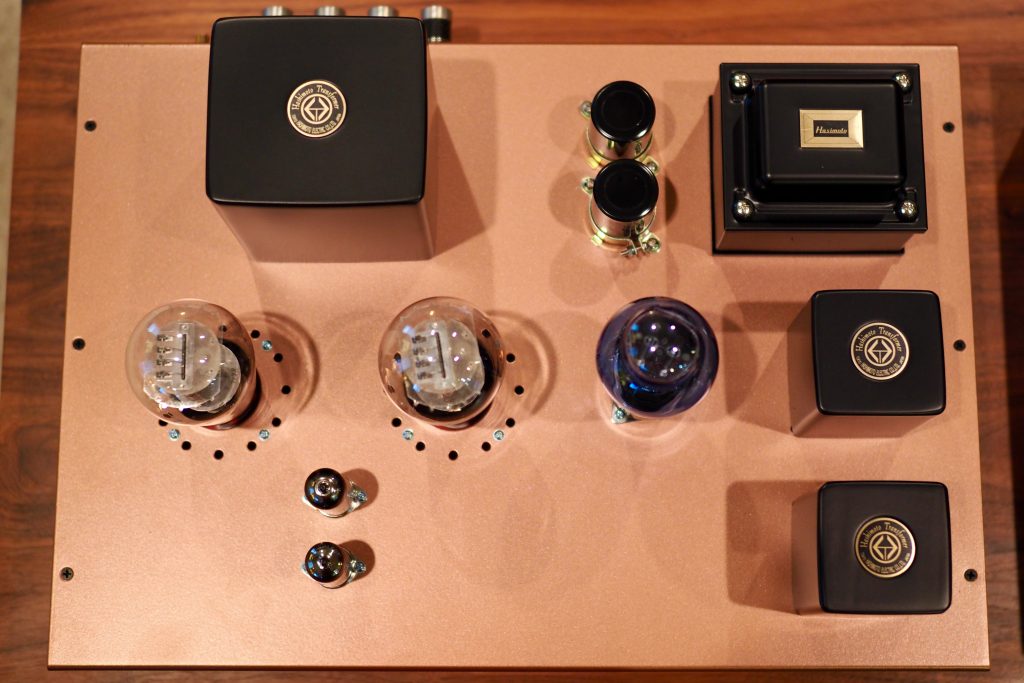
I asked Frank if he would tell us why he chose to go with a parallel 2A3 SET circuit for his statement amplifier instead of a single 300B SET circuit, for example, which would provide a similar level of output power:
"That is a very legit question, one many people ask. To begin with, I must note that the 45, 2A3, and 300B vacuum tubes all have their own unique sound. Some in audiophile circles think that all direct heated triodes have about the same sort of sound quality attributes, but they don't, they all have their own unique voice."
Between the 2A3 and 300B direct heated triodes, Frank prefers the sound quality of the 2A3, and notes the 2A3 was designed originally as an audio tube, whereas the 300B was designed more for industrial sound reinforcement purposes, like you see in movie theaters and auditoriums.
Frank feels that the greater linearity of the 2A3, and being able to heat it directly with AC from the power transformer, makes for better overall sound quality, and a more "real sound" than a 300B can achieve.
Frank says an AC heated 2.5V 2A3 will always be quieter than an AC heated 5V 300B, and that AC heated 300Bs are noisy enough that you will hear hum over very sensitive loudspeakers.
Frank says that to overcome the noise limitations of an AC heated 300B, a separate DC power supply stage is needed to provide DC heating, but the down side is that a separate DC power supply stage causes more degradation to the sound quality than simply using AC heating with a 2A3.
Frank told me he thought the key as to why he thinks the 2A3 is higher performing vacuum tube than the 300B is that it is an easier to drive due to its higher efficiency, and also, the primary impedance needed for a P-SET 2A3 is lower at 1.25-1.75K, versus 3K-5K for a single 300B SET, which makes it more efficient in circuits.
Frank told me, "A typical 300B makes 6-7 watts before distortion occurs, and with a very good output transformer it might reach 8-10 watts before distortion occurs. When we talk about the output power at Triode Lab, we always use the power measured before distortion occurs. Our P-SET 2A3 RSR can easily provide 8-10 watts before distortion occurs."
So, to sum up Frank's preference for a parallel 2A3 SET circuit over a single 300B SET circuit for his state-of-art RSR amplifier, is that when properly implemented—as with the RSR—a parallel 2A3 circuit equals or exceeds the sound quality that a single 300B circuit is capable of, provides approximately equal output power, is more linear, introduces less signal degradation, and gives a more "real sound" quality to the music during listening sessions.
Review System
Tannoy Westminster Royal Special Edition loudspeakers with custom Duelund CAST crossovers served as the loudspeakers for this article.
The Westminsters were connected to the Triode Lab 2A3 P-SET RSR monaural amplifiers with Duelund DCA16GA tinned-copper speaker cables.
The Triode Lab 2A3 parallel P-SET RSR monaural amplifiers were connected to a Leben RS-100U line level preamplifier with Belden 8402 microphone cable interconnects.
The digital source was the Audio Note (UK) 4.1x CD player (in for review, more HERE), and was connected to the Leben RS-100U preamplifier with Duelund DCA16GA tinned-copper interconnects.
The analog source was my CTC Garrard 301 turntable, fitted with an Artisan Fidelity plinth, Schick tonearm, an Audio Note (UK) Io I MC phono cartridge and AN-S4 step-up transformer. AN-V silver interconnects connected the AN-S4 SUT to my Leben RS-30EQ phono preamplifier.
Power cables were Acoustic Revive Absolute (for the RSR mono amps), and Acoustic Revive Power Reference TripleC NCF (for the Leben RS-30EQ, Leben RS-100U, and Audio Note (UK) 4.1x CD player).
All of the power cables were plugged into an Acoustic Revive RPT-6 Absolute NCF Power Distributor, which itself was plugged into wall AC with an Acoustic Revive Absolute power cord.
The AC outlet was composed of an Acoustic Revive CB-1DB receptacle base plate, CFRP-1F carbon fiber outlet plate, and an Acoustic Revive modified Oyaide R-1 receptacle.
The above combination of components are what I settled upon while voicing the system using the 'comparison by contrast' approach to voicing, where the goal was to optimize the sound quality and musicality across a wide variety of recordings of varied recording quality.
Listening Impressions
I've included listening impressions for both CDs and LPs with the Triode Lab 2A3 RSR K-1 monaural amplifiers.
Long-time readers know I have only recently begun to appreciate CDs, as prior to that my primary focus was on LPs.
My newfound appreciation for CDs was the result of listening to CDs with the Audio Note (UK) CD 2.1x/II CD player (review HERE), which provided a level of listening satisfaction from CDs that hitherto I was only able to enjoy with LPs.
The beauty of the Audio Note (UK) CD 2.1x/II CD player, was that it made it possible to indulge my desire to explore music from the four historic eras of the recording arts, as recordings from all those eras have been transferred to digital and made available as CDs for our listening enjoyment.
Now I can easily explore music on CDs that were recorded during the acoustic era (1877 to 1925), the electric era (1925 to 1945), the magnetic era (1945 to 1975), and the digital era (1975 to the present).
Many audio enthusiasts are very familiar with recordings from the magnetic and digital eras of recording, but typically less familiar with recordings from the acoustic and electric eras of recording, where a considerable amount of the landmark performances of music in our recorded music canon reside.
I really love music and HiFi, and hearing those ancient recordings of musical performances from the acoustic and electric eras over a high-performance audio system has been an addictive pleasure that has expanded my world of musical enjoyment in ways that are very important to me.
A properly voiced high-fidelity audio system with well-designed components should be able to play the vast majority of recordings from all of the eras of the recording arts as beautiful and emotionally engaging music listening experiences, with only an occasional recording being a 'clunker'.
Those old direct-to-disc acoustic and electric era recordings on 78s were mono, had a truncated range of frequency bandwidth, were noisier compared to the best recordings from the magnetic and digital eras of recording, and yet those early recordings on 78s offer a sense of life, emotion, and musical engagement that only the best recordings from those later eras of the recording arts can match.
A quality high-fidelity audio system will make clear there are 'signature' differences in the recording techniques of the respective eras of recording, while still presenting the recordings from those eras with a sort of 'authenticity' that makes them exciting and fun to listen to.
I've really enjoyed working my way through Naxos Historical's highly regarded The Complete Recordings of Enrico Caruso box set. Ward Marston transferred "mint condition original pressings" of 78 records to digital for this box set.
I've been listening to Volume 6 of the box set, which includes performances recorded 1911-1912, during the acoustic era of recording (1877-1925).
When listening to those early acoustic recordings, I listened for how well the Triode Lab 2A3 P-SET RSR mono amps conveyed the life, emotion, and musical engagement of Caruso's recorded performances, which are considered to be some of the greatest recordings—from a musical performance standpoint—in the history of the recording arts.
As you would expect, 78 direct-to-disc recordings tend to have a very 'direct' sound quality to them, with a lot of vivid presence, rather remarkable macro-dynamics (but less micro-dynamics), and some record surface noise that was inherent to most direct-to-disc recordings of the acoustic period of recording.
According to the United States Library of Congress, the recording equipment of the acoustic era of recording generally covered the range of 100 - 2500Hz. However, the Library of Congress noted that "While the recording range for acoustics was very limited, a wider range of frequencies could be achieved by any of the following: a thinner, more sensitive diaphragm, the sharpness of the cutting point, the characteristics of the recording horn (most companies kept many on hand of varying sizes, flare, thickness, etc.) and the pliability of the wax. Softer wax could capture more sonic highs than harder wax." (HERE)
That means that the frequency range of acoustic era 78 records typically did capture a fairly big slice of voices and instruments fundamental frequencies (~ 100 - 900Hz), and in some cases a portion of their higher frequency harmonics (~ 900 - 8000Hz).
In the case of operatic tenor Enrico Caruso, that means most of his fundamental frequencies were likely captured, and part of his harmonic frequencies, before hitting the upper frequency limit of acoustic recording technology.
Through the Triode Lab 2A3 P-SET RSR mono amps I heard a natural tonal balance that was complimentary to Caruso's recorded voice and the accompanying instruments, allowing the life and emotion of those performances to come through convincingly.
The power and macro-dynamics of Caruso's voice were astonishing through the Triode Lab 2A3 P-SET RSR mono amps, and provided a listening session that kept me on the edge of my seat in rapt attention, while delivering tremendous musical engagement.
The Triode Lab 2A3 P-SET RSR mono amps also rendered the surface noise of the 78 transfers in a fashion that made it relatively non-intrusive, by putting the noise into a different dimension from the music itself.
What I have found with these 78 transfers was that I would notice the surface noise at first, but then my mind tuned it out as I continued listening, with my focus drawn to the incredible musical performances, just like it does with the tape hiss of magnetic era recordings.
As you would expect, there's very little visuospatial imaging and soundstage information due to the nature of these early acoustic recording sessions, where vocalists and instrumentalists were clustered around a single recording horn.
Due to the Triode Lab 2A3 P-SET RSR mono amps' impressive resolving power, I was able to hear the individual vocal and instrumental contributions to the performances clearly articulated, albeit contained in a rather narrow mono window centered between my loudspeakers, as is the norm for acoustic era 78 records.
With the Triode Lab 2A3 P-SET RSR mono amps, I felt a strong sense of almost eerie auditory 'time travel' back to the recording sessions, which gave me a strong sensation of looking, hearing, and 'feeling' into the past, not to mention a serious case of 'goosebumps' as I listened to Caruso's riveting performances. What fun!
With some of the acoustic era recordings in The Complete Recordings of Enrico Caruso box set, I couldn't quite get enough gain with the 2 watt Triode Lab 45 EVO SET integrated amp to achieve live-like volume levels with my Tannoy Westminster Royal loudspeakers, however, with the 8 watt Triode Lab 2A3 P-SET RSR mono amps, live-like volume levels were never an issue, and there was more power available than I ever needed.
I was impressed with what I was hearing from Volume 6 of The Complete Recordings of Enrico Caruso box set through the Triode Lab 2A3 P-SET RSR mono amps, and they had more than enough power to play any of the recorded performances at live-like volume levels, and easily handled the impressive dynamics of Caruso's powerful voice.
The Triode Lab 2A3 P-SET RSR mono amps also provided a sense of naturalness in tonality that made the recordings enjoyable to listen to, yet delivered lots of resolution of recorded information that allowed me to hear the full suite of vocal and instrumental contributions that the recording sessions captured.
Most importantly, the Triode Lab 2A3 P-SET RSR mono amps provided an incredibly strong emotional connection to the musical performances that kept me on the edge of my listening seat, and in awe of the life and emotional impact those 78 records were capable of delivering to the listener.
With the introduction of condenser microphones, vacuum tube amplifiers, and electromagnetic cutting heads during the electric recording era (1925 - 1945), the advancements in recording technology expanded the frequency range of recording to approximately 50 - 6000Hz.
The Louis Armstrong 1928-1931 album on the Hermes label is one of my jazz favorites from the electric era of the recording arts.
About the digital transfers, the back cover of the CD says, "These transfers have been made from vinylite test pressings as opposed to commercial shellac pressings, thereby giving true fidelity with minimal surface noise, without the use of artificial filtering or enhancement."
The overall fidelity of these recordings—sourced from the Okeh Records label who brought us the breakthrough Hot Five and Hot Seven recording sessions—is quite remarkable.
The surface noise is so low I think many listeners would assume they were early mono recordings from the magnetic era of recording (1945 - 1975), rather than direct-to-disc 78 recordings from the electric era of recording.
I wonder what recording system was used by Okeh Records?
The most popular recording system during the period of these recordings was the Western Electric Westrex recording system, which you can see in action on American Epic, an excellent three-part documentary of early recording in the USA, narrated by Robert Redford, and available on a Blu-ray 2-disc set.
Whatever the original recording equipment was, through the Triode Lab 2A3 P-SET RSR mono amps it was easy to tell why the recorded performances of Louis Armstrong during this period were revelatory to the jazz world.
I admit to a passion for the music of Louis Armstrong that was ignited the day I heard him play a concert at the Lloyd Center Mall in 1965, and all the thrill and enjoyment of that concert comes back to me every time I listen to his recorded performances.
Through the Triode Lab 2A3 P-SET RSR mono amps I heard a vivid and engaging presence of the vocalists and instruments clustered in a narrow mono recording window between my loudspeakers.
I heard a tactile sense of touch on the instruments, Louis' rich and mellow voice, and in the very best SET fashion, the music was full of life, color, presence, dynamics, and that feeling of musical greatness from the recorded musical performances that I experienced hearing Louis Armstrong playing live back in 1965.
The Triode Lab 2A3 P-SET RSR mono amps performance on those acoustic and electric era recordings was absolutely magnificent, delivering the remarkable life and emotional impact those recording eras had to offer in abundance.
What happens with great amplifiers like the Triode Lab 2A3 P-SET RSR mono amps, is that the focus of my attention as a listener shifts from listening to the 'sound quality' aspects of a recording, to being immersed in the quality of the musical performances, which is an important performance distinction for amplifier performance.
All thoughts of anything other than how great the musical performances of Caruso and Louis Armstrong were just faded into the background.
Now lets listen to an album recorded with magnetic era (1945 - 1975) recording technology through the Triode Lab 2A3 P-SET RSR mono amps.
The recording arts changed dramatically from the electric to the magnetic era, and the recording arts evolved rapidly during the magnetic era.
Magnetic tape and reel-to-reel recorders with bandwidths of 30 - 15,000 Hz appeared. Recording for stereo playback eventually became common.
The equipment used for the recording / playback of musical performances had much higher performance levels compared to previous recording eras.
The entire music reproduction chain in audio improved greatly during the magnetic era of recording. Recording quality improved dramatically, as did the software (R2R tapes and LPs).
The amplification quality peak that occurred 1920 - 1930 continued to evolve and be refined, and the loudspeaker quality peak that occurred in the late 1930s led by cinema sound research & development, continued to evolve and be refined as well.
By 1960 sound recording had evolved into what has been referred to as the 'Golden Age of Recording', a period of recording quality that many audio enthusiasts consider to be unmatched in high-fidelity performance to this day.
Recording engineers continued to record with magnetic era technology well into the digital era of recording (1975 to present) due to its impressive fidelity.
Even in 2022, musicians concerned with achieving the highest recorded fidelity, are still recording with magnetic era technology.
A nice example of the performance of magnetic era recording technology on CD is an album of duet performances by jazz guitarist Jim Hall and slide trombone player Bob Brookmeyer, Jim Hall / Bob Brookmeyer Live At The North Sea Jazz Festival, that my jazz guitarist friend, David Gitlen, brought over for us to listen to.
Recorded live at the North Sea Jazz Festival in the Netherlands in 1979, Jim Hall / Bob Brookmeyer Live At The North Sea Jazz Festival is a wonderful example of what was possible with magnetic era recording technology that has been transferred to digital.
With Live At The North Sea Jazz Festival, the first things I noticed about the Triode Lab 2A3 P-SET RSR mono amps were their superbly natural tonality, their dynamic prowess (both micro and macro), and the life-like presence of the aural instrumental images.
The Triode Lab 2A3 P-SET RSR mono amps were stunning on this recording, both in terms of their overall performance with visuospatial sound quality, and musicality.
I could really begin to hear more of what these monaural amplifiers performance potential was on Live At The North Sea Jazz Festival with its magnetic recording technology.
From a visuospatial sound quality perspective, imaging was superb through the Triode Lab 2A3 P-SET RSR mono amps, with Jim's and Bob's aural images having a lot of flesh and blood body to them that made it feel like they were in the room with me.
Transparency was excellent as well, making it easy 'to see' into the recording, and not only hear Jim and Bob as they played, but also to hear the expansive audience that was present for the performances.
The ability of the Triode Lab 2A3 P-SET RSR mono amps to resolve detail was impressive. I could hear all the nuances of Jim's guitar playing when comping for Bob, or when improvising, and all the little audience nuances in the distant background, which made me feel like I was present at the concert.
The Triode Lab 2A3 P-SET RSR mono amps also conveyed the acoustic sense of 'space' of the recording venue superbly, filling my living room with a vast sense of the reverberant sound of the North Sea Jazz Festival.
This was a recording of a duo, so you wouldn't think there would be a lot to talk about in terms of soundstage performance, other than it sounded like Jim and Bob were in my living room, yet the audience gave a sense of an expansive soundstage, with a lot of depth and width.
I found the timbral realism of Jim's guitar and Bob's valve trombone to be breathtakingly beautiful through the Triode Lab 2A3 P-SET RSR mono amps, with the resolution of tone color—the ability to distinctly hear the chordal variations resulting from adding additional pitches to three tone triads—to be very audible.
Those elements of musicality, like melody and dynamics, were also superb through the Triode Lab 2A3 P-SET RSR mono amps. The nuances of even the subtlest of dynamic gradations were readily apparent, lending a live-like feel to Jim's and Bob's playing.
With the Triode Lab 2A3 P-SET RSR mono amps, the 'soul' of the music was captivatingly presented with acoustic and electric era recordings, but with the best magnetic recordings the 'body, soul, and spirit' of the music was revealed with a dramatic living presence that was full of life, color, and emotion.
I'll tell you what, state-of-art single-ended-triode amplifiers like the Triode Lab 2A3 P-SET RSR mono amps, bring recordings of music to life in a 'real sound' sort of way like nothing else can.
If you've got speakers that are sensitive enough to get the best out of the Triode Lab 2A3 P-SET RSR mono amps, I think you'll be stunned at how good these state-of-art amplifiers can sound.
Ok, now onto the digital era of recording technology.
I think it is safe to say there was a seismic shift in recording technology from the magnetic era to the digital era of recording technology, but whether it was a positive or negative shift, is still hotly debated among audiophiles today.
While the perceived limitations of digital era recording technology have been discussed widely by audio enthusiasts, it turns out that much (but not all) of the poor sound quality listeners experienced early in the digital recording era, was largely a function of the immature digital playback technology.
An example of an early 44.1kHz/16-bit digital recording was the Cowboy Junkies The Trinity Session, which was recorded in 1987 at the Church of the Holy Trinity, Toronto, Ontario, Canada, by recording engineer Peter Moore.
For the recording session the Cowboy Junkies were arranged around a single Calrec ambisonic microphone, much like musicians would have been arranged around a recording horn during the acoustic era of recording.
Recording duties were performed by a Sony PCM-F1 analog-to-digital converter connected to a Sony Betamax SL-2000, a combination which Sony sold as a portable 44.1kHz/16-bit digital audio recording system, and which was used by many recording engineers to make digital master recordings in the 1980s and 1990s.
Released on both CD and LP in 1988, The Trinity Session wowed audiophiles with its excellent music and surprisingly good sound quality, and is one of those 'must have' examples of digital era recording technology.
About this recording, Analogue Productions says, "Yes, this is a digital recording. True to our company principles, Analogue Productions in almost all cases reissues recordings only where the analog master tape is available. However, there are rare exceptions that whether digitally recorded or otherwise, a recording is so outstanding it's worthy of the highest quality vinyl reissue."
Since I've got copies of The Trinity Session on both CD and LP, I thought I'd tell you about how both sounded through high-performance sources, the Audio Note (UK) 4.1x CD player, and my CTC Garrard 301 turntable, fitted with an Audio Note (UK) Io I MC phono cartridge, and AN-S4 step-up transformer.
On the CD, through the Triode Lab 2A3 P-SET RSR mono amps, I heard a real sense of the natural reverb of the Church of the Holy Trinity in Toronto (which is why the Cowboy Junkies chose it as a recording location), and of course Margo Timmins intimate haunting vocals throughout the album were gorgeous.
Also present was a wide and deep soundstage effect, with vivid aural images of Alan Anton (bassist), Michael Timmins (guitarist), Peter Timmins (drummer), and Margo Timmins (vocalist) arrayed across its width and depth.
The Triode Lab 2A3 P-SET RSR mono amps ability to resolve even the smallest recorded details was very evident on The Trinity Session, with the nuances of Peter's cymbals, Michael's guitar playing, and Alan's bass playing, being readily evident, for example.
Not only did the Triode Lab 2A3 P-SET RSR mono amps capture the beautiful acoustics of the Church of the Holy Trinity, but literally every aspect of the audiophile-style recording attributes of soundstage, imaging, transparency, and resolution, were truly remarkable.
I don't have the Analogue Productions LP of The Trinity Session (which is supposed to be amazing), but rather one of the RCA BMG reissues (ditto for the CD).
Even at that, my CTC Garrard 301 turntable, fitted with an Audio Note (UK) Io I MC phono cartridge and AN-S4 step-up transformer, played back the LP through the Triode Lab 2A3 P-SET RSR mono amps in a decidedly more 'analogue' fashion, which sounded more musically natural and enjoyable to me.
I'm guessing that BMG probably used the same digital master recording for both the CD and LP reissues. Both the CD and vinyl source components I used for this article are very high-performance, and I thought the LP sounded way better.
Why is that?
Let me stir the hornets nest a bit more: playing back recordings from the acoustic, electric, and magnetic recording eras that were transferred to digital, and then reissued on CD, all sounded more musically natural and engaging on CD to me than the digital recording of The Trinity Session, regardless of whether it was on CD or vinyl.
Crazy eh?
While digital recordings can sound impressive, and indeed The Trinity Session does, I'm not so sure that digital recordings during the early period of the digital recording era—at least that I've heard—are on the same level as analog recordings from any era, from a musical engagement perspective.
Perhaps the Analog Productions remaster / reissue LP of The Trinity Session would bridge that gap, but the releases I have don't.
Maybe that situation has changed with the best examples of more recent digital recordings, which is something I want to explore further in the future.
The high-fidelity of the Audio Note (UK) digital and analog sources, the eye-popping performance of the Triode Lab 2A3 P-SET RSR mono amps, and my Duelund-ized Tannoy Westminster Royal SE loudspeakers, quickly revealed a lot about the attributes of recordings from the different recording eras, and the software they are on.
I really like hearing that high level of differentiation between (and within) the eras of recording.
The ability to hear all of those various recording era traits I've talked about in this article, while still being able to enjoy recorded musical performances across a wide range of recording quality from the different recording eras, I found to be really illuminating and gratifying as a listener.
Yes, I know, its all about how well an audio system plays music in a satisfying way, but I thought it was fascinating how well these components reveal a certain 'recording era authenticity' about the origin and nature of these recordings, yet still play the music superbly well, and provide a strong emotional connection to the musical performances.
Ok, so I've already told you the Triode Lab 2A3 P-SET RSR mono amps are really something special, but lets go ahead and listen to two final examples of great magnetic era recordings on vinyl, which many audiophiles consider to be the premium recording media and software combination that is both relatively affordable, and easily accessible, to today's audio enthusiasts.
The For Django album is one of the great Joe Pass albums, and is considered to be one of the essential jazz guitar albums by jazz guitarists and jazz guitar aficionados.
As you might suspect, For Django is a tribute to the late jazz guitarist, Django Reinhardt, and included Joe's interpretations of songs written by, or popularized by, Django.
For Django was recorded at in 1964 at Pacific Jazz Studios in Hollywood, California, and featured Joe Pass (guitar), John Pisano (guitar), Jim Hughart (bass), and Colin Bailey (drums).
The LP version that I have of For Django is the Blue Note 'Tone Poets' reissue that was mastered by Kevin Gray from the original master tape (HERE).
A big "Thank you!" to Kevin and Blue Note for providing such a stellar quality jazz guitar album for us to listen to!
Through the Triode Lab 2A3 P-SET RSR mono amps, the first thing I noted was how natural and beautiful the overall tone was, in classic SET fashion, on For Django.
For Django is a good example of a stereo studio recording from the magnetic era of recording, that delivers a life-sized soundstage, with Joe in the center, and John Pisano and Jim Hughart on my left, and Colin Bailey on my right, in the soundstage.
The aural images of Joe, John, Jim, and Colin had lots of flesh and blood presence, and made it sound and feel like they were playing in my living room.
The Triode Lab 2A3 P-SET RSR mono amps are very well balanced top-to-bottom, with bass articulation, mid-range performance, and the natural presentation of high-frequencies being extremely live-like and natural sounding.
One of the aspects of the Triode Lab 2A3 P-SET RSR mono amps performance that has impressed throughout my listening sessions, is how transparent these amps are, and how resolving of nuance they are.
With the exception of the Triode Lab 45 EVO integrated amplifier, no amplifier I've heard in my audio systems over the years comes close to the transparency and resolution the Triode Lab 2A3 P-SET RSR mono amps are capable of, while still sounding so naturally musical.
One of the things I am trying to learn how to do better, is listening to an album, picking out the key of a song, identifying the chord progressions used, and learning how to play it on my guitar.
The Triode Lab 2A3 P-SET RSR mono amps rather remarkable level of transparency and resolution really help with trying to figure out what is going on in songs musically, as they are so very good at illuminating the musical traits of songs.
All of those musical traits like timbral realism (the unique 'voices' of instruments), the resolution of tone color (the ability to distinctly hear the chordal variations resulting from adding additional pitches to three tone triads), melody (the tune you 'whistle while you work'), harmony (treble & bass accompaniments to the melody), rhythm (the steady beat that determines the tempo), tempo (speed), dynamics (variations in loudness), and loudness (the ability to play naturally at live-like levels appropriate to a piece of music), are incredibly realistic through the Triode Lab 2A3 P-SET RSR mono amps.
From a 'real sound' perspective, the Triode Lab 2A3 P-SET RSR mono amps are champs, with For Django sounding and feeling incredibly real and present, placing Joe, John, Jim, and Colin in my living room in life-like fashion.
The final album is Getz/Gilberto, an audiophile jazz classic.
With its superb sound quality and excellent music its always a treat to listen to Getz/Gilberto.
Recorded in stereo in 1963 at A&R Recording Studios in New York City, Getz/Gilberto showcased the talents of Stan Getz (sax), Astrud Gilberto (vocals), João Gilberto (guitar), Antônio Carlos Jobim (piano), Sebastião Neto (double bass), and Milton Banana (drums, pandeiro), and has won well-deserved awards and accolades around the world, both for its exceptional music, and for its superbly engineered recording quality.
The version I have is the 45 rpm 2-LP set reissued by Analogue Productions, mastered by George Marino at Sterling Sound, and it is truly a superb reissue.
The vocals of Astrud and João have so much palpable presence through the Triode Lab 2A3 P-SET RSR mono amps that it is quite stunning to hear, and indeed on both on Getz/Gilberto and For Django, the incredible 'supernatural' presence of the aural images never failed to deliver goosebumps during listening sessions.
The music of Getz/Gilberto has all kinds of subtle dynamic and tone color shadings, and through the Triode Lab 2A3 P-SET RSR mono amps I heard everything bloom and flow in an incredibly natural and beautiful fashion that really highlighted the sophistication of this music.
The timbral textures of Stan's sax, João's guitar, Antônio's piano, Sebastião's double bass, and Milton's drums and pandeiro, sounded extremely realistic and satisfying.
João's vocal textures were richly resonant, warm and smooth. Astrud's vocals had an ethereal reverberance that was rich in tenderness, vulnerability, and beauty, almost hauntingly so.
As I've mentioned, the transparency and resolution of the Triode Lab 2A3 P-SET RSR mono amps are truly remarkable, with even little non-musical nuances like Stan's fingering on the keys of his sax, being easily audible.
All those little musical and non-musical nuances in the recording came through with great clarity, and really contributed to a life-like aural presence of the musicians in my listening sessions.
When Frank described the high level of performance of the custom Hashimoto output transformers used in the Triode Lab 2A3 P-SET RSR mono amps, he mentioned how they allow all of the recorded information to come through, without being diminished by softening or blurring the amount of detail in the audio signal, and indeed that is what it sounded like during listening sessions.
I could really hear that output transformer quality in the presentation of the music, as there's just so much natural detail present that I marveled at it during listening sessions.
The transformer quality also becomes obvious in terms of the Triode Lab 2A3 P-SET RSR mono amps' impressive soundstaging ability, imaging, and the huge sense of reverberant space delivered to me during listening sessions.
Whether it is in terms of the audiophile-style sound qualities of transparency, resolution, soundstage, the reverberant sense of 'space' of the recording venue, and imaging, or the attributes of music like timbre, tone color, melody, harmony, rhythm, or dynamics, the Triode Lab 2A3 P-SET RSR mono amps do it all extremely well, so well, that it is really hard to criticize their performance in any way. They're just that good.
Summary and Conclusions
I've been telling my audio pals that the Triode Lab 45 EVO SET integrated amplifier, and now the Triode Lab 2A3 P-SET RSR mono amps, represent 'next level' single-ended triode amplifiers.
These are amplifiers that are a level of performance above any of the SET amplifiers I've owned in the past.
There is really nothing I can criticize about the Triode Lab 2A3 P-SET RSR mono amps performance, they're just extraordinarily refined, both in terms of sound quality and musicality.
If there's any compromise incurred by adding a second paralleled output tube, I couldn't hear it.
The paralleled output tubes speak with once voice, and the benefits of the extra power they provide, means that the Triode Lab 2A3 P-SET RSR mono amps can be paired with loudspeakers with a sensitivity of about 90dB and above.
The build quality of the Triode Lab 2A3 P-SET RSR mono amps is impeccable.
Their appearance is tasteful and refined, and just oozes artisanal level quality.
The Triode Lab 2A3 P-SET RSR monaural amplifiers price of $22,000 USD is expensive, but given their custom nature, artisanal build quality, the exclusivity of a limited edition of only four pairs being offered, their state of-art level of performance, and 10-year warranty, I think the pricing is fair.
Very, very, highly recommended.
If you think the Triode Lab 2A3 P-SET RSR monaural amplifiers are for you, don't dally in contacting Frank to reserve one of the four pairs being offered, as these won't last long, and once they're gone... well, you get the idea.
I would like to thank Frank Ng for giving me the opportunity to experience the state-of-art performance of his Triode Lab 2A3 P-SET RSR mono amps and write about it for the readers of Positive Feedback. Thank you, Frank!
As always, thanks for stopping by, and may the tone be with you!
Triode Lab 2A3 P-SET RSR Monaural Amplifiers
Retail: $22,000 USD
Warranty: 10 years
Triode Lab
3447 Kennedy Rd, Unit 5-7
Scarborough, ON
Canada M1V 4Y3
647.716.3223




